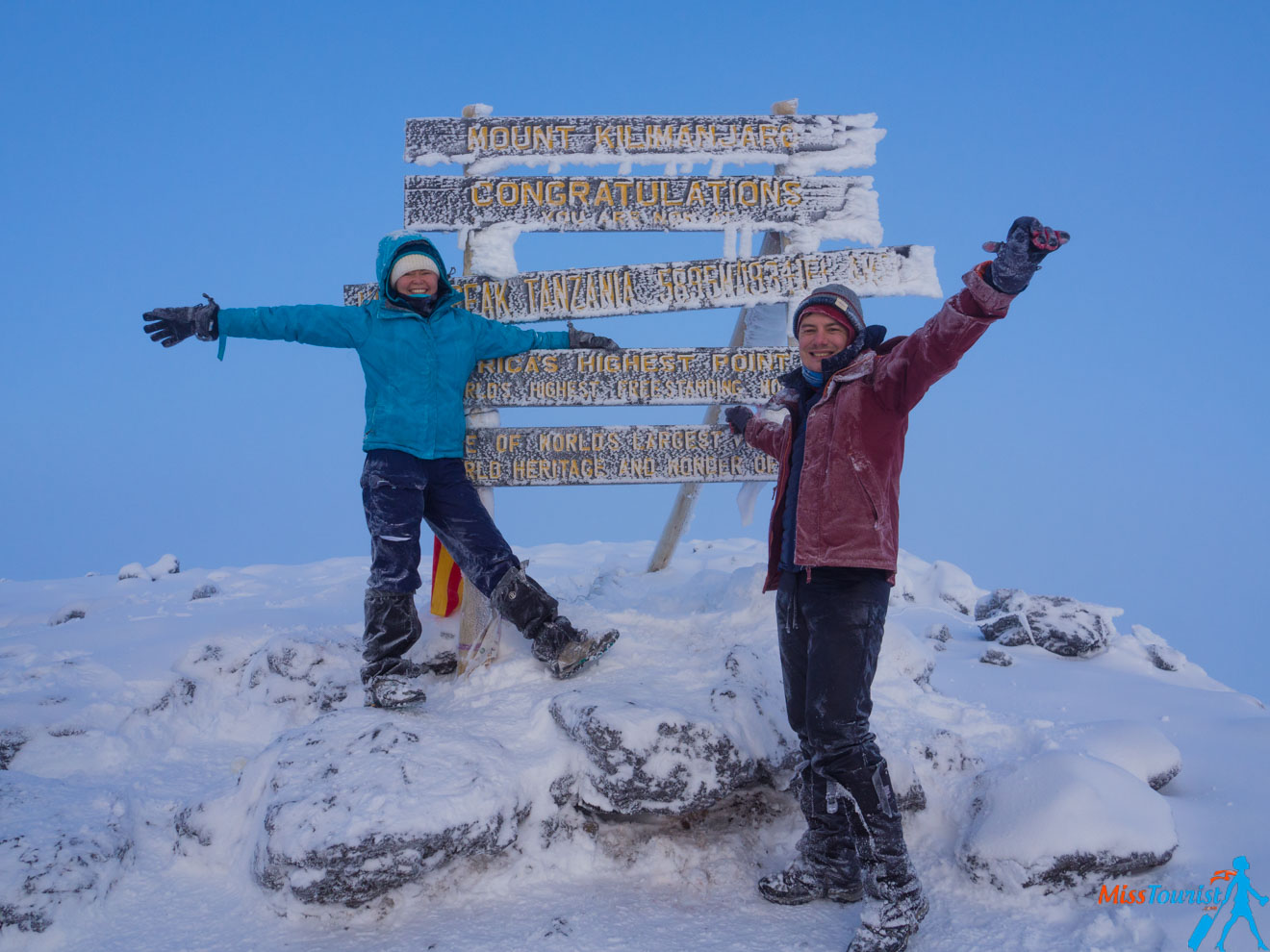
Hello there, adventurer! Thinking about climbing Kilimanjaro? You are in the right place!
Kilimanjaro is a dormant volcano and it is one of the 7 highest peaks in the world, many people call it “the roof of Africa” because it is the highest mountain on the continent.
Climbing Kilimanjaro will probably be one of the hardest, but also one of the most exciting things you will ever do in your life! It is challenging but also immensely rewarding!
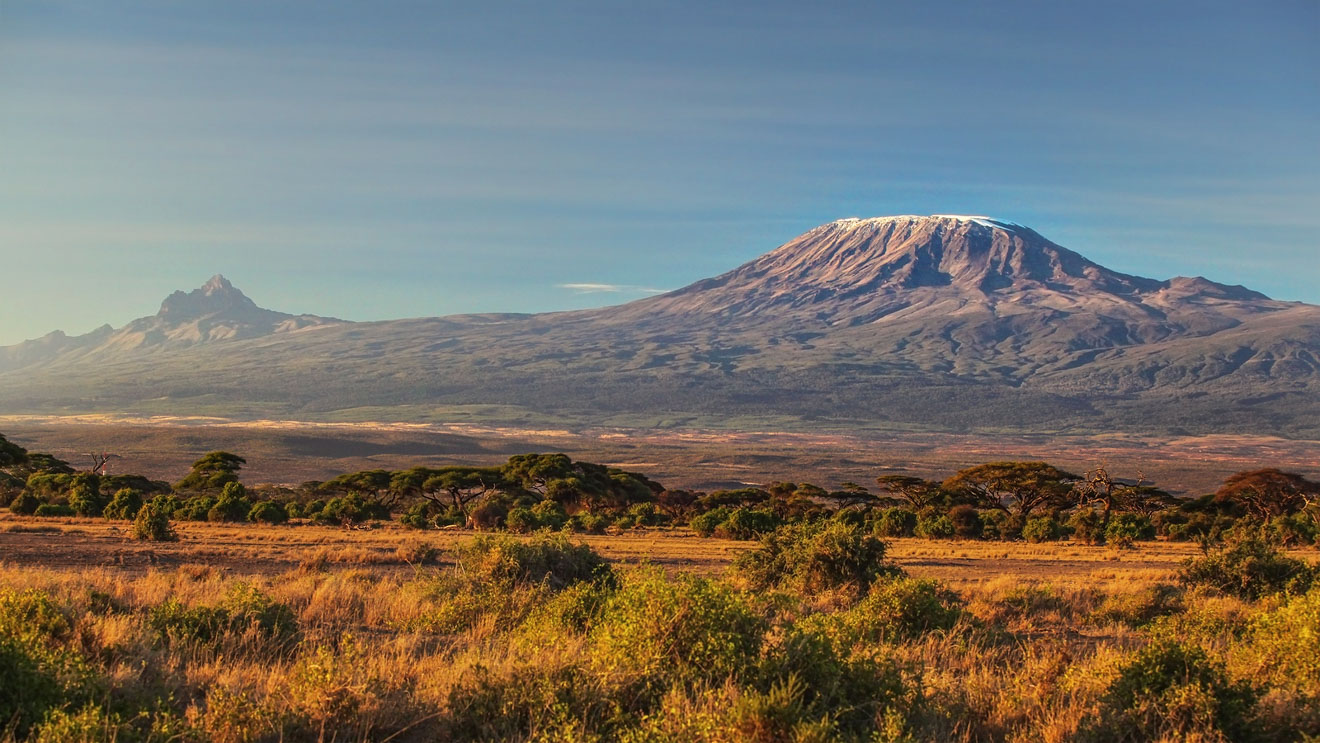
When I was preparing for the trek, I read dozens of posts on the internet about Kilimanjaro and yet I still had a lot of my questions left unanswered. No worries because I, as a blogger, went there myself and decided to write the most extensive guide on the internet about Kilimanjaro!
Just think that “You will conquer this mountain one step at a time” and keep on reading to find the tips that will help you do it successfully:
Contents
- 1. Choosing The Right Route That Would Fit You Is Crucial
- 2. Choosing The Right Company Is Even More Crucial
- 3. The Altitude Sickness Is Real
- 4. Training Before Kili
- 5. Pack Smart
- 6. You Will NOT Need To Carry All The Equipment Yourself
- 7. Keep In Mind That Tipping Is Expected
- BONUS: How To Choose The Best Company For Your Mount Kilimanjaro Hike
- More Practical Information About Kilimanjaro
- Conclusion
NOTE: If you are a visual person, check out my Instagram (@misstourist), you will see the recording of my trek day by day in the Highlights section (look for “Tanzania”). PS. And don’t forget to follow me! 😉
1. Choosing The Right Route That Would Fit You Is Crucial
I found myself asking – which route in Kilimanjaro should I take? How do I know which one is the best for me? So many questions!
Here is the Kilimanjaro routes map:
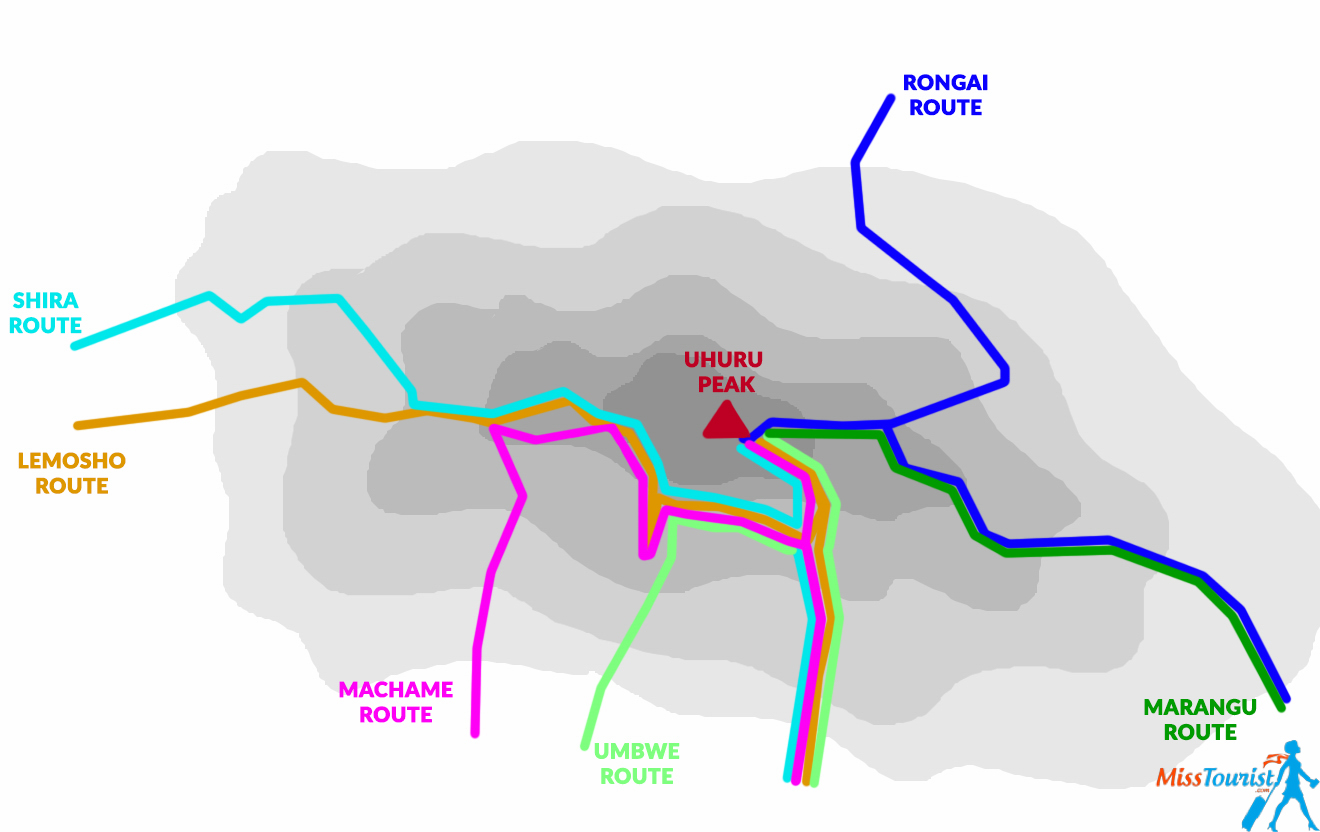
There are 6 routes at the moment and they vary in length, cost, difficulty, and scenery.
Let me quickly describe each one of them (in the order of their popularity):
ATTENTION: The company that I highly recommend is offering a whopping 5% discount to all my readers – that is the best deal they would ever give anyone and I have done all the negotiation for you! They created a secret email only for my readers, drop them an email to and claim your 5% off – [email protected] 😉
P.S. It only works by this email and only when you claimed it right away, if you first contacted them through an official website form/email, they won’t be able to give you the discount since it is exclusive for Miss Tourist readers only.
1) Marangu route (Coca-Cola route)
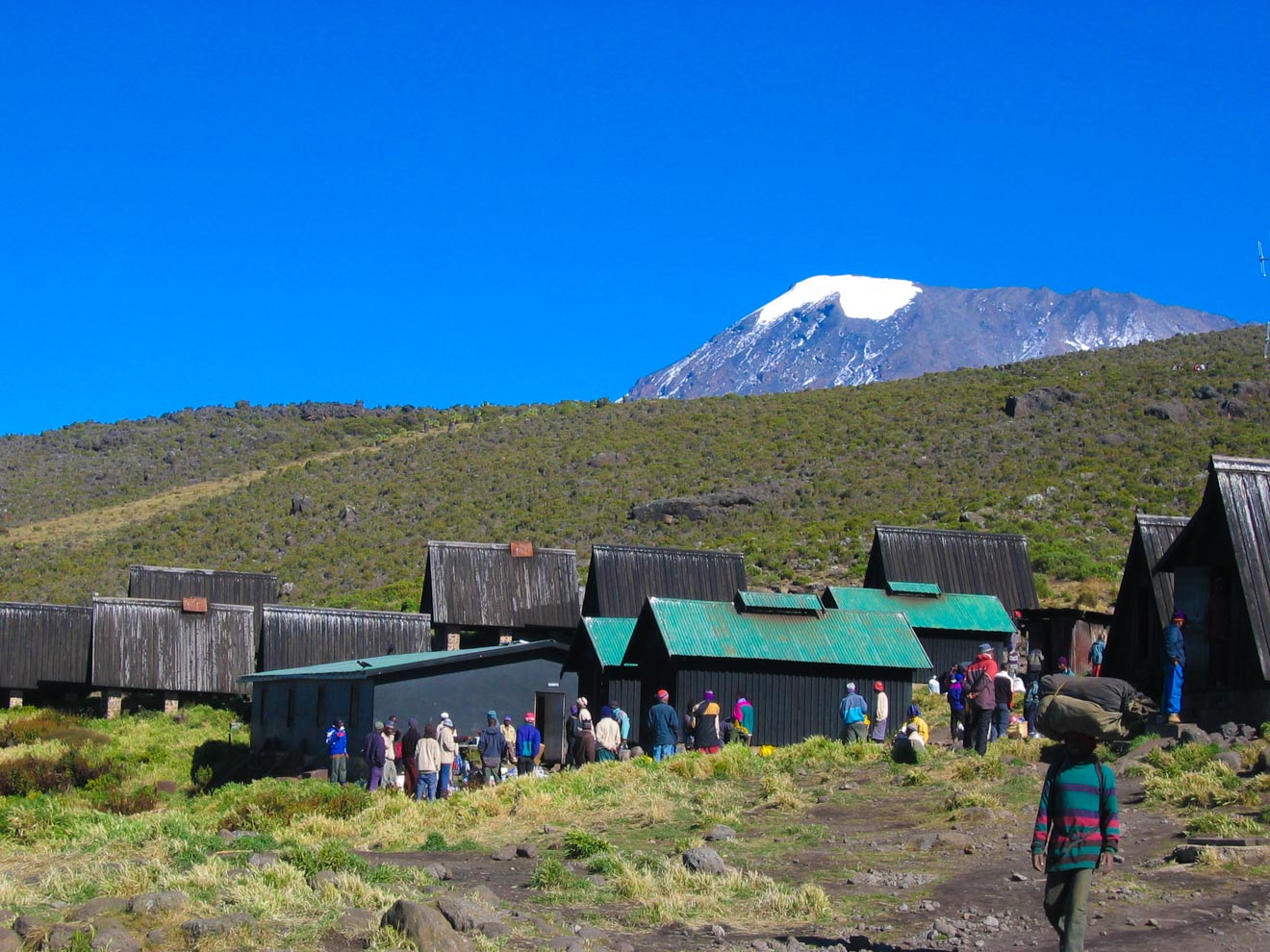
Marangu is the most popular route because it is the shortest and it is the only one that offers accommodation in huts (not tents). There is a catch though – the success rate is the lowest on this route because your body does not have enough time to adjust to the high altitude. I would not recommend you to take this route unless you are completely sure your body is OK with the lack of oxygen.
Spoiler alert: the level of success is not exactly correlated with your fitness level, it highly depends on how your body reacts to high altitude. I am also not a big fan of this route because the trail is the same for people going up AND down – which makes this route very, VERY busy.
The only reason I would consider this route is if I would be absolutely against sleeping in tents as Marangu offers huts accommodation. But then again, do not imagine you will have a bed and a shower there – it is a very simple mattress on the floor with no linen and 5-7 other people in the room.
- Success rate – 40%
- Duration – 5 days, 4 nights (you can add an optional acclimatization day)
- Approximate price – ~1 870 US$/person (1 740 US$ for you with my readers’ discount)
2) Machame (Whiskey Route)
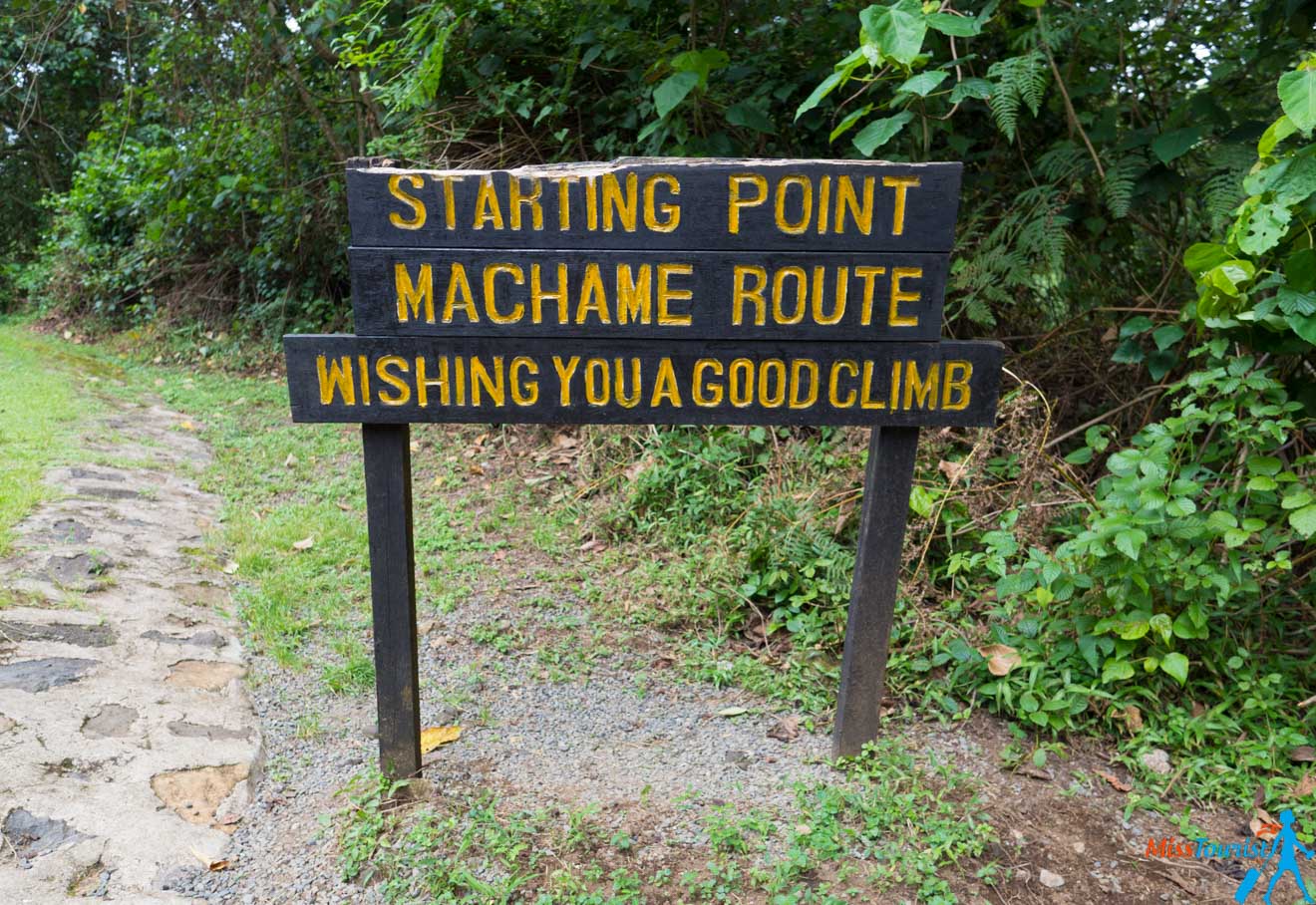
Machame (also known as the Whiskey route of Kilimanjaro) is the second most popular route and the one I chose as well. I did a lot of research and at the end, I had no regrets about my decision because the route offers great views, the opportunity to adapt to altitude and it is not too long (7 days), so for me this was an ideal combination! There were some pretty epic views there too! The Lava Tower, the Barranco Wall, the majestic views to Uhuru Peak – this is actually considered to be the most scenic route out of all 6!
What I liked about this route is that it is built this way that you give your body enough time to adjust to the high altitude and then you go down for the night. I think it is a well-thought path that worked great for me.
I took a 7 days Machame route and this is how my experience looked like (a huge thanks to veedyou.com for helping me with video editing):
Machame’s disadvantage is that it is a pretty popular route and it can get quite crowded (also, the reason for this is because 2 more routes join it at some point). But each day we left the camp earlier than most of the groups so it wasn’t that bad.
PRO TIP: Again, as a reminder, I teamed up with a company called Altezza and I can wholeheartedly vouch for them and they gave my readers a 5% discount to all the tours, yay! To get your discount write them to THIS SECRET EMAIL – [email protected] – they will give you 5% off by default, no coupon codes etc. needed!
- Success rate – 80%
- Duration – 7 days (there is also a version with 6 days that basically does what you are supposed to do in 7 days and I think it is a really bad idea, see why here).
- Approximate price – 2 180 US$ (2 030 US$ for you with my readers’ discount)
3) Lemosho route
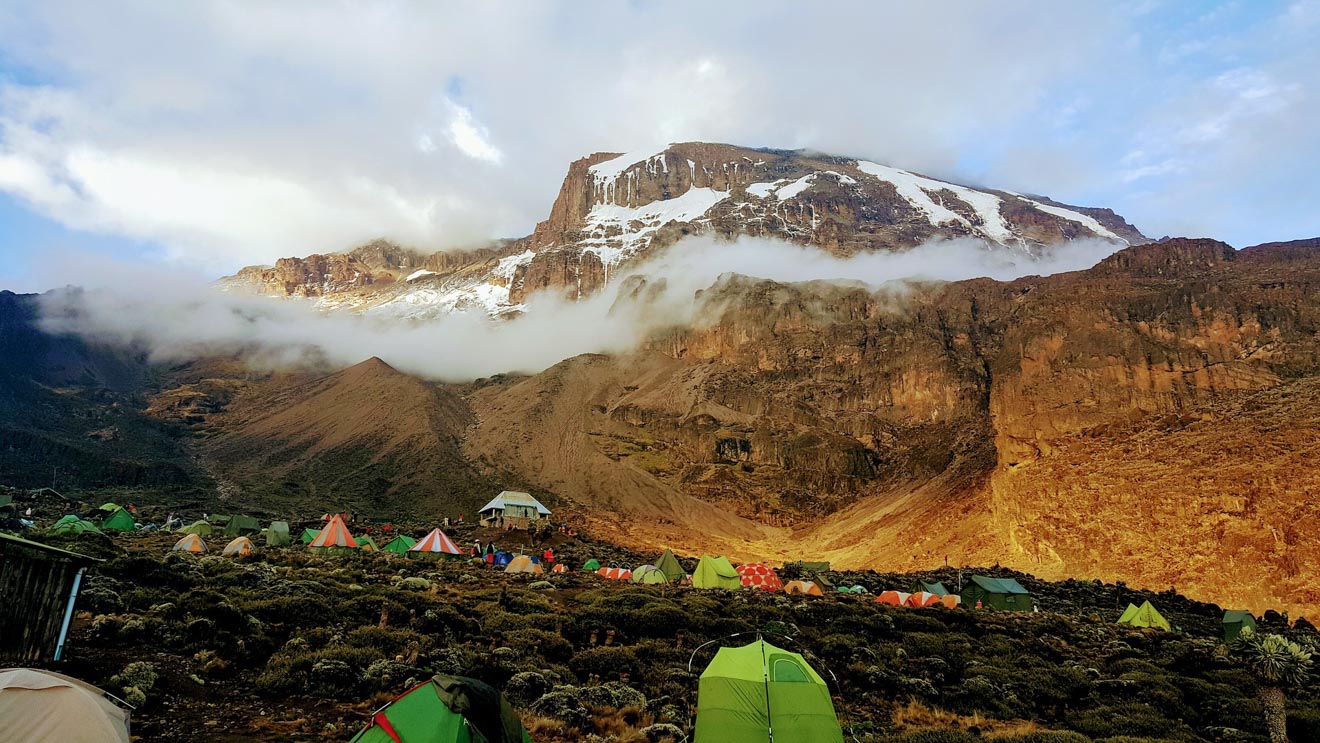
If you really want to make sure you will adjust to the high altitude, choose the Lemosho route! Lemosho is built this way that it does a big re-route to give you some extra time to stay at high elevation and that is why it takes much longer than the other ones – 9 days.
The route is usually more expensive due to its duration but in the case of Altezza, there is hardly any price difference to be honest. Anyway, it is worth it as this route has the highest Kilimanjaro success rate!
- Success rate – 90%
- Duration – there are many variations of days – you can choose from 7, 8 or 9-days treks. I even heard about Lemosho routes that take 11 days!
- Approximate price – 2 480 US$ (2 310 US$ for you with my readers’ discount)
4) Rongai route
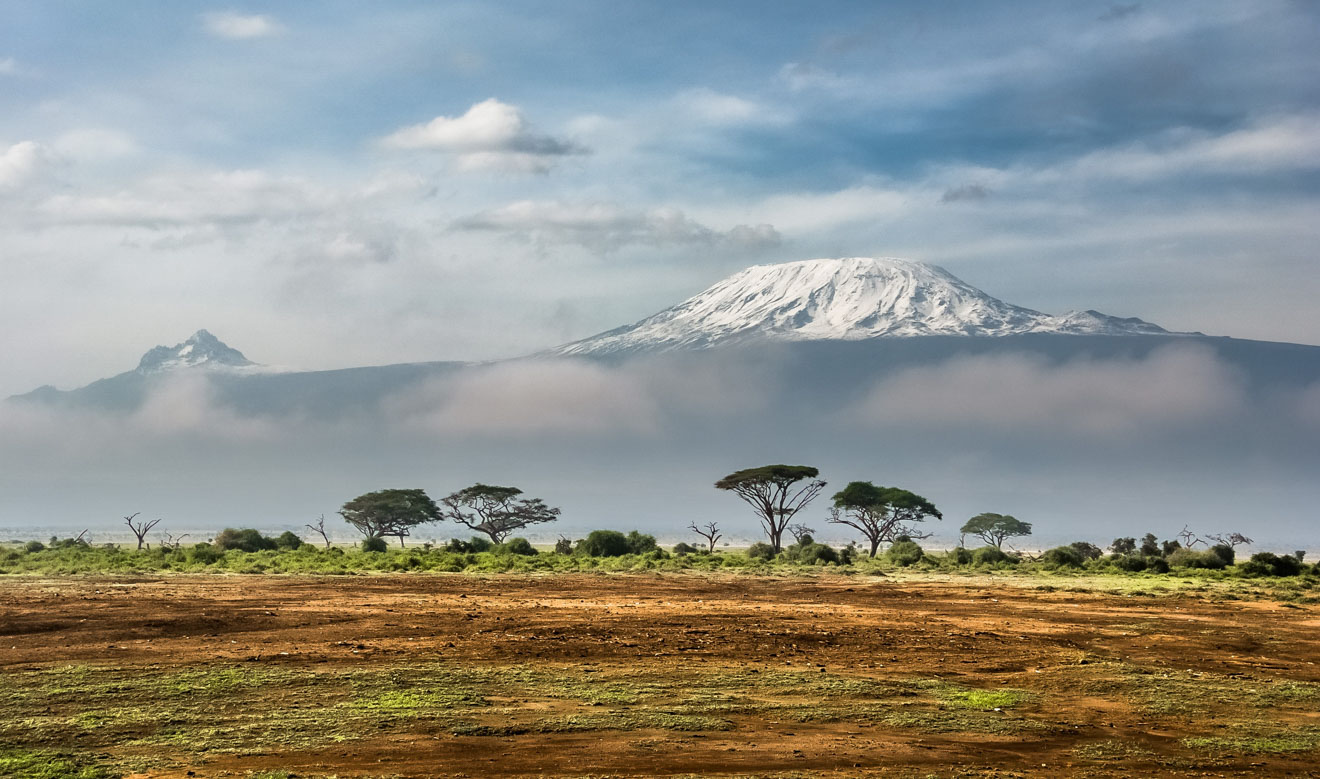
Even if Rongai route is slightly more expensive, it offers great views and there are not as many people on the trail as on the previous 3! Despite the fact you won’t see much vegetation/rainforest in the first days, it is still quite a spectacular route. They also say that it is also the easiest out of them all!
NOTE: If you are summiting Kilimanjaro during the rainy season (mid-March to mid-May), this is the best route to take because your chances of getting wet at the beginning of the track are the lowest due to the location of the route (it starts from the Northern side which is the driest side).
- Success rate – 75%
- Duration – 7 days
- Approximate price – around 2 480 US$ (2 310 US$ if you use my readers’ discount)
5) Shira route
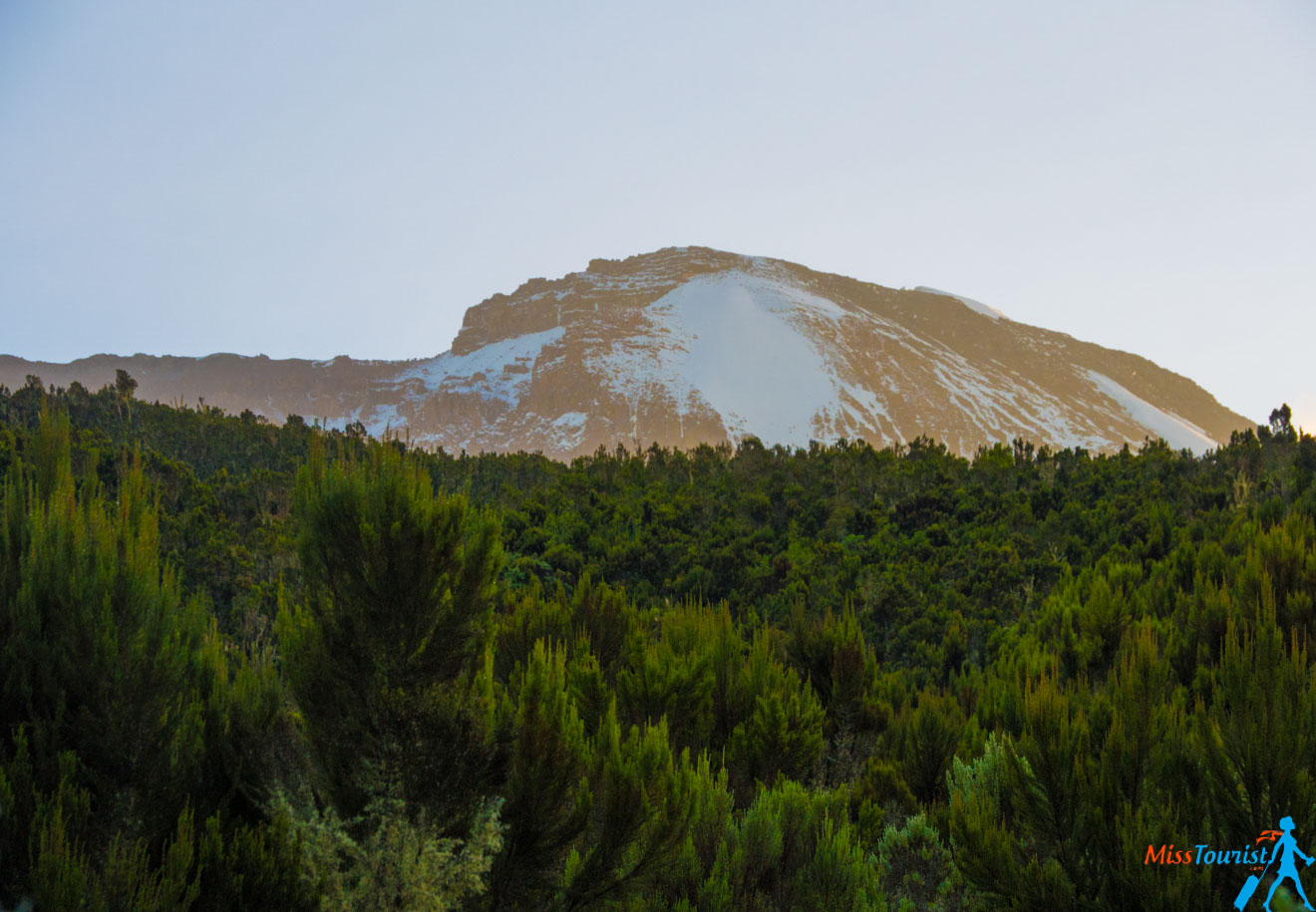
Shira route is a little tricky because from day 1 you will already be on some serious altitude – 3500 m (11 500 ft) which will be a great challenge for your body (especially if you live near the sea level). Shira at some point joins with Machame, so everything I said above about it is true for this one as well.
- Success rate – no statistics found
- Duration – 6 or 7 days
- Approximate price – 2.000 US$
6) Umbwe route
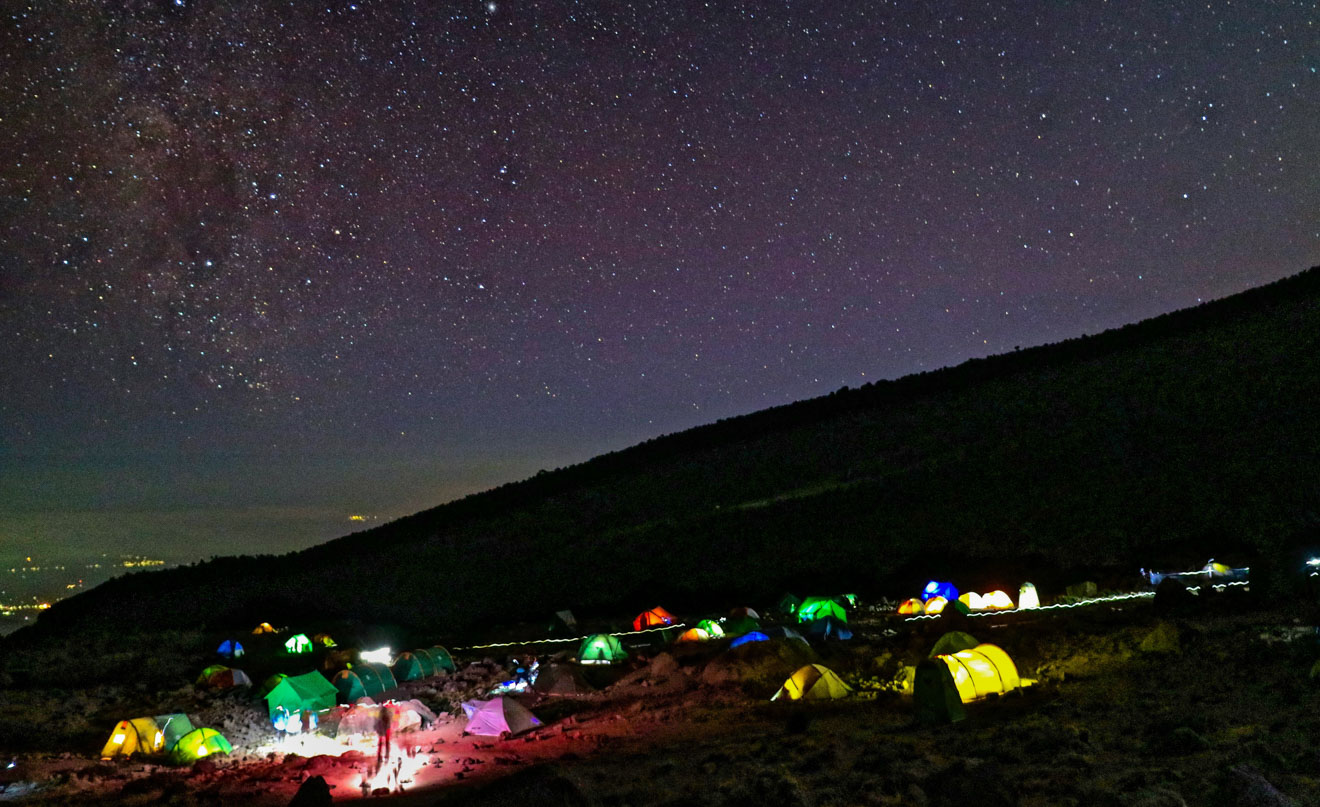
Umbwe is the steepest route of them all, but it is a pretty spectacular one too! Just to give you an example – Umbwe climbers reach Barranco camp on day 2; when I took Kilimanjaro Machame route I reached it on day 4. So, as you can see, climbing will be quite tough.
I can recommend this route only to people with significant previous mountain climbing experience as it is technical and steep.
- Success rate – 75%
- Days – 6-7 days
- Approximate price – 2 200 US$ (2 050 US$ for you with my readers’ discount)
NOTE: there is no official statistical information about the success rates for each route, I have taken it from various sources, the main one being this one. If you have some previous trekking experience and you are in good shape, I would add 10-15% to these statistics.
NOTE 2: The pricing usually depends on the number of people in your group. I know that many of my readers travel in a couple, so I took this as a starting point. If you are going with 3-4 or more people, it will be much cheaper than the prices I noted. Alone – more expensive (as the company will need to hire the whole team of cooks and porters just for 1 person).
NOTE 3: They are listed per person and don’t include tips (about 10% extra).
So, which route should you choose? Think about how much time you have available and how much money you are willing to spend. Also, take your previous hiking experience into consideration. If you climbed Everest, for example, you should not have problems with altitude sickness. Otherwise, I would take it slowly and not go for the fastest route!
All of the above should help you to make the right choice! Do not hesitate to let me know in the comments of you still have any questions on this point. 🙂
2. Choosing The Right Company Is Even More Crucial
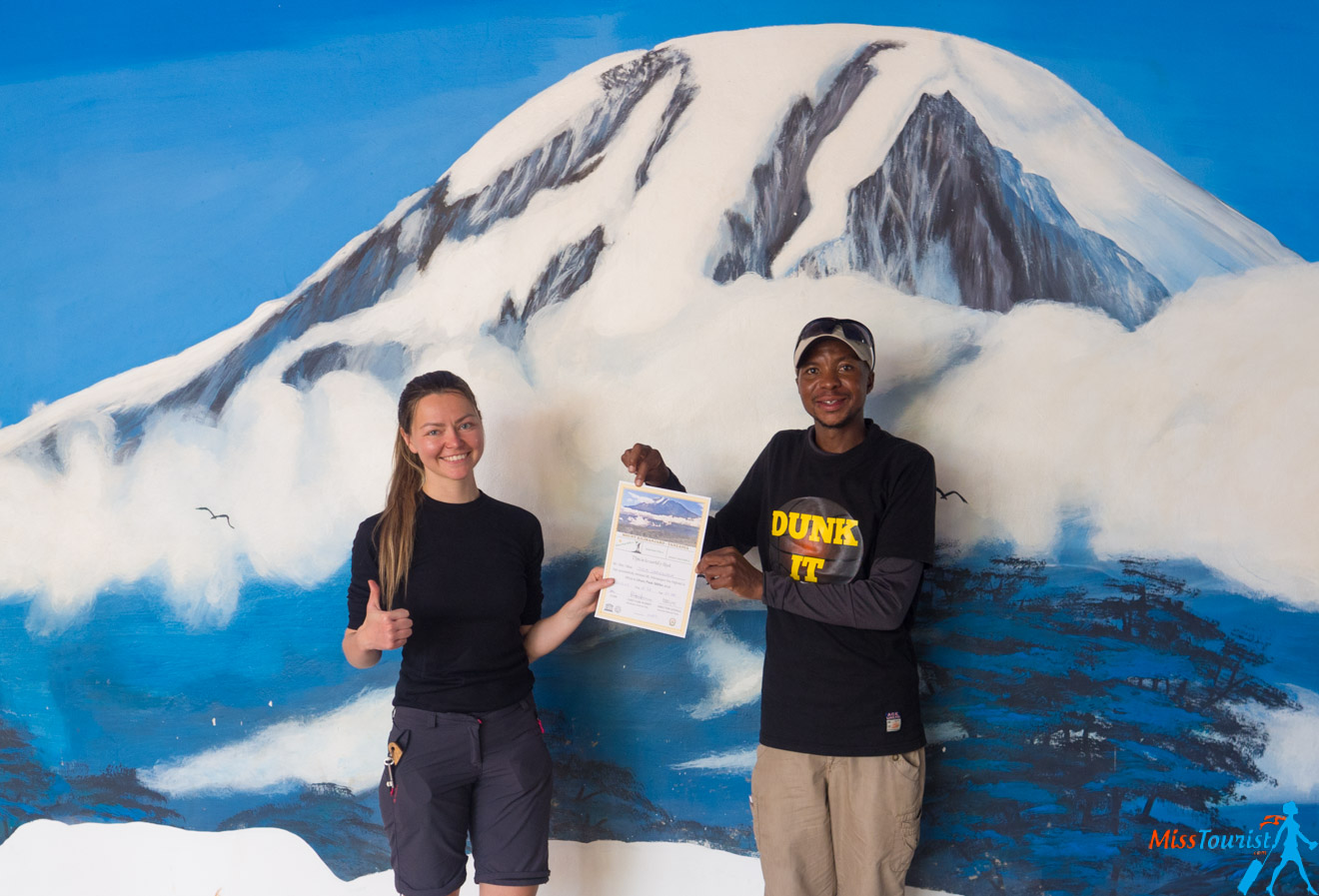
First of all, and I would like to make this clear –
Even if you’d want to, you can’t climb Kilimanjaro alone, it is actually illegal. You need to go with a certified guide and his team – porters, cook etc.
There are thousands of tour agencies in Kilimanjaro, so how can you choose a good one? This is a serious choice after all!
Well, first of all, please, PLEASE do not go for the cheapest operator, this is really not the time and place to risk your health.
Remember – incompetent guides can make the trip horrible and even life-threatening.
NOTE: Read below to see the name of the company I recommend and why and to get a 7 (!!) % discount for your own tour if you decide on going with them!
Say, you found a tour agency that offers you the option to hike Kilimanjaro significantly cheaper than the others and you really would not mind to save a couple of hundred bucks. Why should it be extremely suspicious to you?
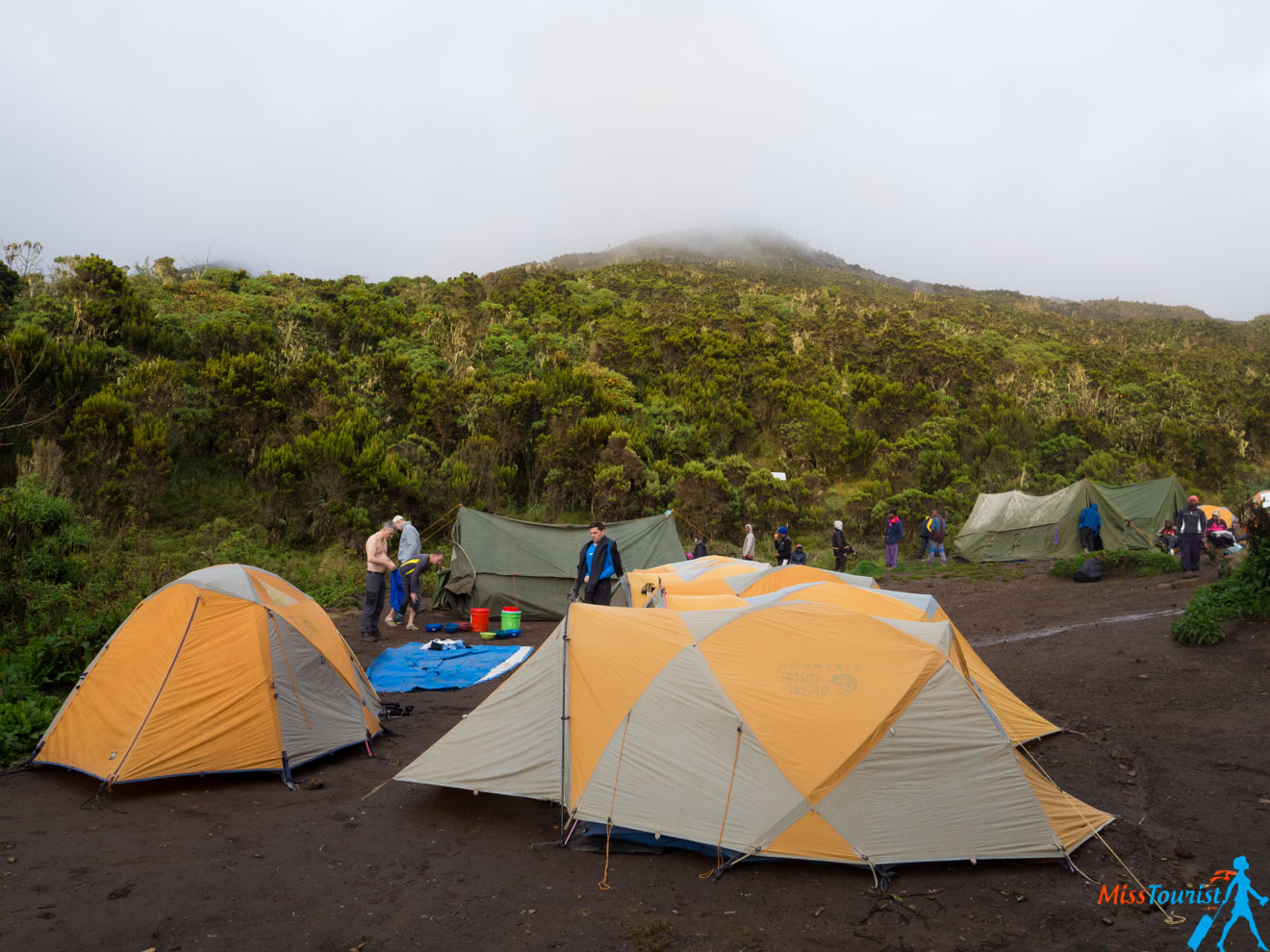
You see, as all the tour companies (no exceptions) have to pay an entrance fee to the Government for each tourist, which is about 800 – 850 US$ depending on the number of days you will spend in Kilimanjaro National Park.
So, the only thing the company can save on is equipment, food, and the porters’ salary.
You don’t want your tent to be of bad quality and your sleeping bags to be thin. If you feel cold and miserable at night, you won’t make it to the summit, trust me!
As for the porters, in dishonest companies, porters are paid less than minimum wage and sometimes they are not paid at all (they work for tips). This is horrible as porters are amazing humans, they do a really hard job on the mountain and they pretty much make your summit happen for you. Would you like to be involved in a company that treats people like this? I most certainly would not like to support an organization like that!
Equipment, food, guide’s experience level – all this makes a big difference and all this costs money.
But all Kilimanjaro tour operators have to go through a certification process and all guides are licensed, so all of these companies must be good, right? – Wrong!

Please remember that we are still talking about Tanzania, the heart of Africa, where some of the certifications are true only on paper, there are hundreds of ways to trick the imperfect system and the corruption is still very strong in the country. That is why I would only trust my life to a company that I know for sure is good and trustworthy!
Here is the list of companies that I can recommend because I talked to their staff and their customers and I saw the quality of the equipment they use:
- Altezza (secret email – [email protected] to get your 5% discount)
- Intrepid Travel
- G Adventures
- Trekking Hero
Also, I recommend checking out TourRadar – it is a great price comparison website that combines many good tour agencies and you can see everything available for your dates, including prices and climbing Kilimanjaro reviews, all in one page.
The reasons I can vouch for Altezza is because they have the newest equipment (suuuuper important trust me! If your tent is old and doesn’t zip or your sleeping bag is thin – all of that makes a huge difference!) and professional guides. I remember that we were slightly jealous on them because they always got the best spots and you could see that their tents is brand new. 🙂
Myself, I used another company which I do not want to name because even though I was satisfied with the guide, the company itself has a lot of room for improvement and I think there are better companies out there to whom you can fully rely on.
Again, check the prices on the website, Altezza guys are very transparent, drop them a line to an email specially created for my readers ([email protected]), the managers will quote you a price with 5% by default, they know! So, for example, if you would take the same route as we did (Machame route), you will save ~150 US$ per person with this discount code!
BONUS BELOW: If Altezza is booked for your dates or you want to make your own decision about the company with the best value-for-money ratio and who is also ethical to its employees, that is completely fine – I have compiled a list of things you should read and ask from your potential Kilimanjaro climbing company. For this, please check the BONUS section below.
3. The Altitude Sickness Is Real
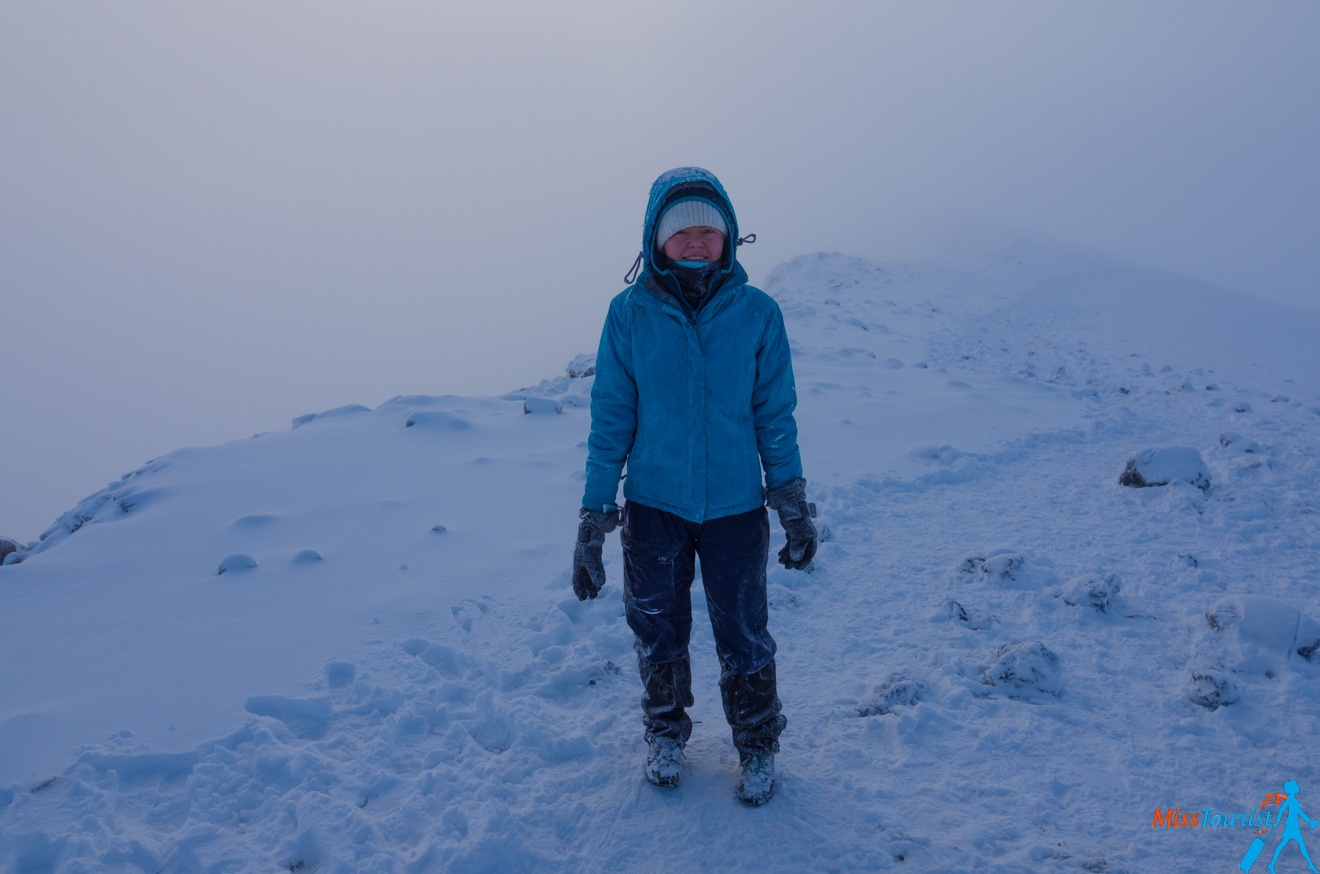
For those of you who think they are physically fit and you climbed some mountains already and that must mean you can’t be bothered by altitude sickness, please read the paragraphs below carefully.
I would definitely not call myself a professional mountaineer, but I have done some hikes around the world – for example in Bolivia and Peru where the elevation was about 4 000m. Despite that, I wasn’t at high altitude for long enough and it didn’t require as much physical activity as for Kilimanjaro. So, even though I was fine there, it absolutely did not mean the altitude sickness would not affect me in Kilimanjaro (though I hoped so, to be honest!).
During my Kili hike I had one severe headache and one lighter one the next day.
Thank God, my body adjusted to the lack of oxygen, but it wasn’t easy and, oh God, did I feel that Kilimanjaro ascension!
It is absolutely normal to feel dizzy and experience headaches. Some of them might be quite bad and most people can’t escape them! And that’s ok, your body will adjust to the lack of oxygen soon, but the process won’t be very pleasant, so be ready for it.
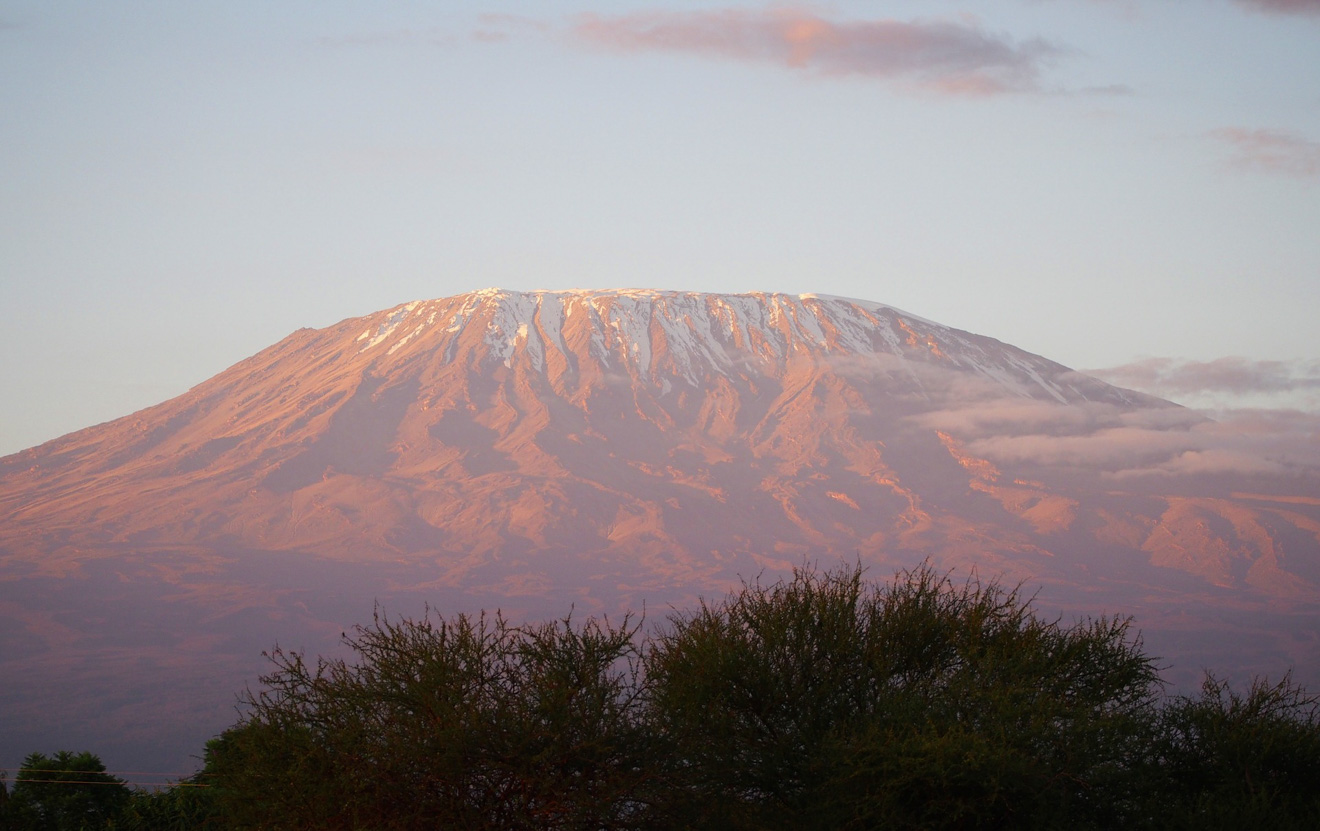
On the other hand, if you are feeling really sick (throwing up, fainting) and the pills your guide gave you do not help, you need to ask yourself this question – “What do you want more – to climb Kili or to stay alive and healthy?”. Your guide will evaluate your health condition and decide wether you should continue the hike.
I met a couple of people who had to turn back and they looked pretty physically fit, so you can never know how your body would react. If this would happen to me, I would turn back, I would not push it. In fact, I was mentally ready for it and would feel no shame about it. What can you do, it is a lottery in a way…
Having said that, here are some hacks on beating the altitude sickness:
- Go slooooooow. “pole – pole” (“slowly-slowly” in Swahili, the local language) – you will hear that phrase A LOT and this is the key to beating the altitude sickness. The slower you go and the deeper you breathe, the more oxygen will get to your lungs and other organs. Seriously, on the summit day we were as fast as turtles probably!
- Drink plenty of liquids. Drinking water during the day is recommended by all the locals and they know what they are talking about. Also, when I experienced a severe headache, eating a hot soup helped in my case!
- Have a good rest. It is easy – if you overwork yourself, you won’t be able to conquer that mountain. Your body needs a lot of force and energy to adjust to something it is not used to, so sleep enough and do not take short, hard routes if you feel you are not ready for them.
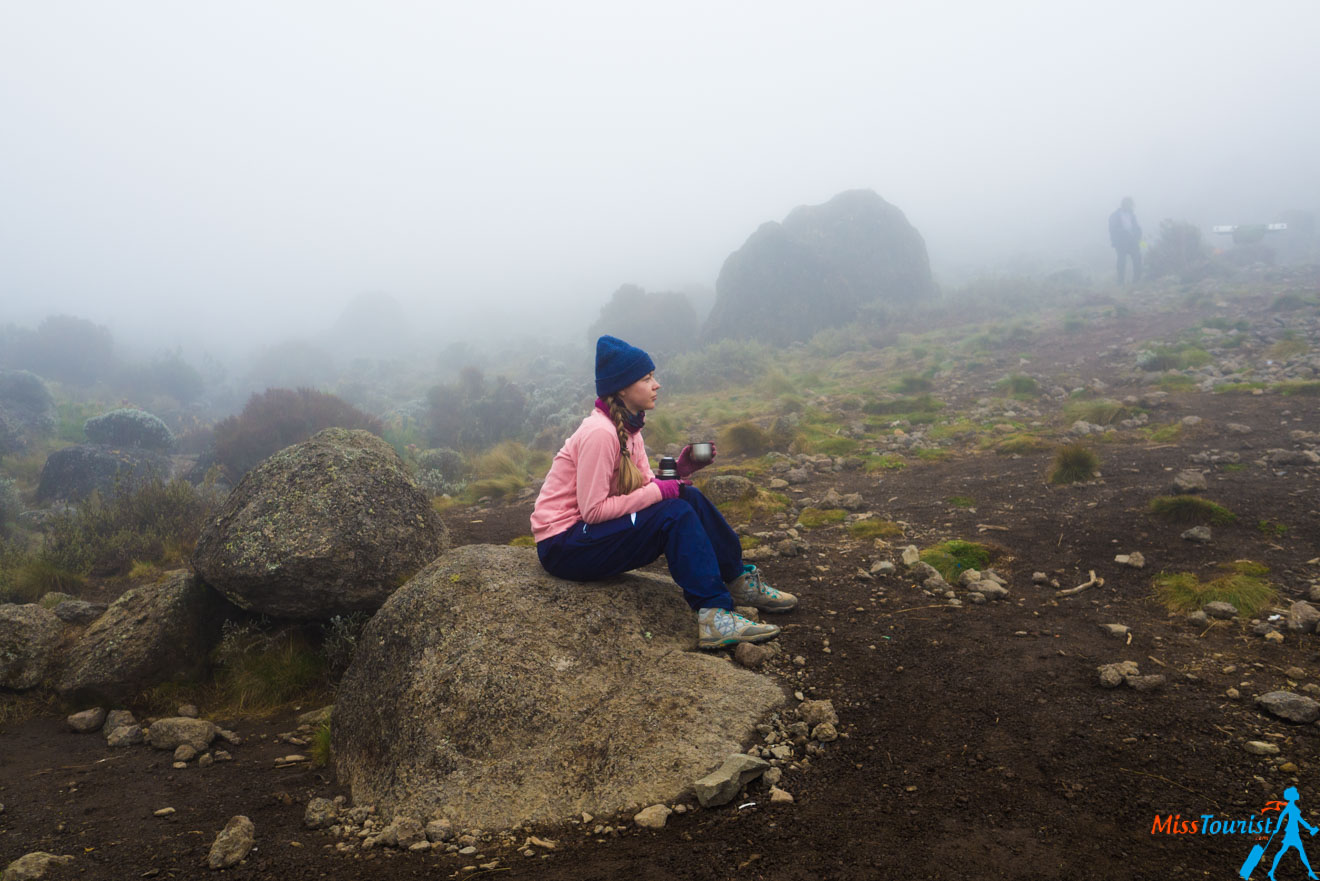
NOTE: A very well-known pill against altitude sickness is Diamox. You can buy it just in case, but your guide will surely have it for you (as well as the oxygen, they are required to have it in the backpack just in case) . To be honest, I am not a supporter of taking pills before you need them. So I only asked for a pill from my guide when I felt that strong headache. The funny thing is that it took him some time to go to his tent and collect the pill and, when he was back, the pain already disappeared (I ate some soup and that helped)!
NOTE2: Please consult your doctor before making the decision to climb Kilimanjaro to see if there is anything that could prevent you from going – a heart condition, some respiratory problems, knees problems etc. This is very important because you are not going to be checked on the spot.
Subscribe here to get up to 35% off your accommodation for your next trip!
4. Training Before Kili
Yes, don’t act surprised, it is not often you will climb one of the Seven Summits, so you will need some preparation for it – both physical and mental!
1) Physical preparation
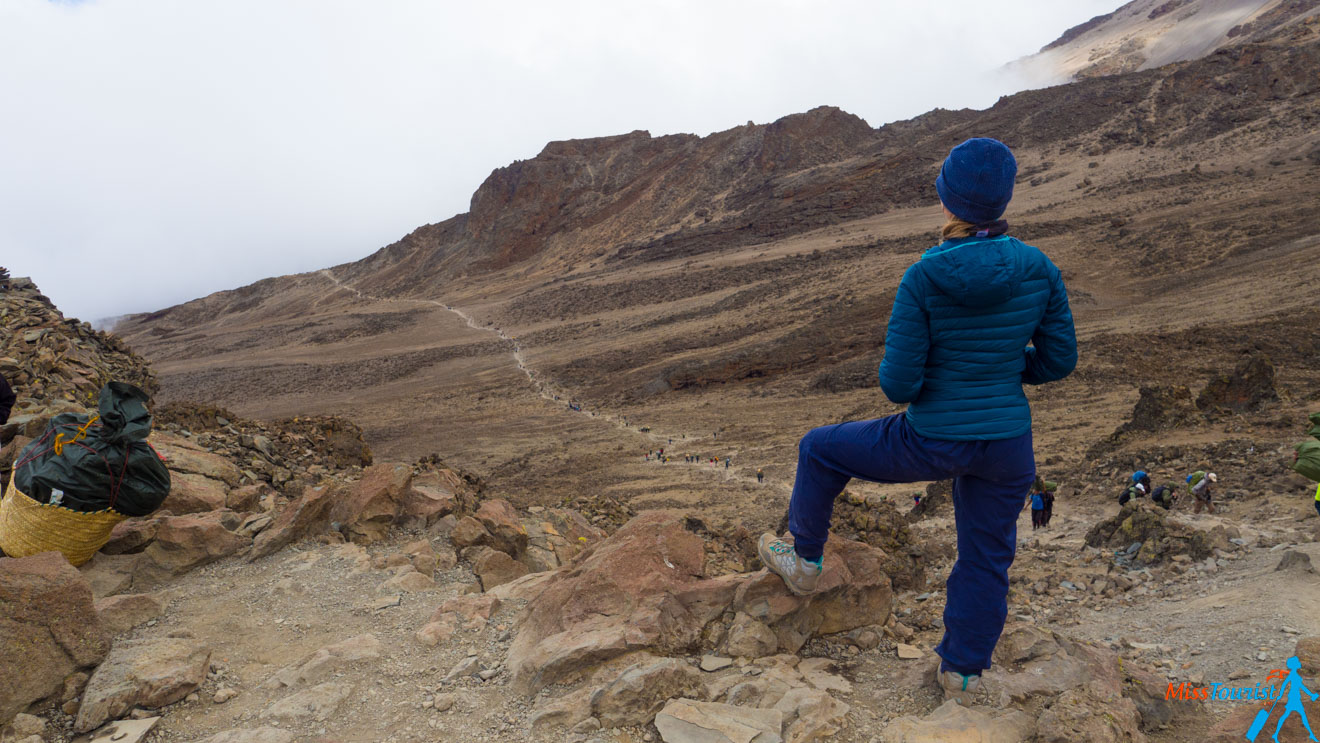
Don’t panic, the climb is actually not as technical as you might have pictured it to yourself! It does involve quite some walking and some climbing, but you won’t need any special equipment for it like for Everest, for instance.
You will, of course, need a good level of physical endurance, so I would recommend starting preparing at least 2 months in advance. Go to the gym, do a lot of physical activities, do some light mountain hiking if possible.
The good news? Reaching Uhuru peak is achievable for people of all ages – from 12 to 70+ years old. Yes, you read that right –
There are kids and seniors that conquer Kilimanjaro, so you can too!
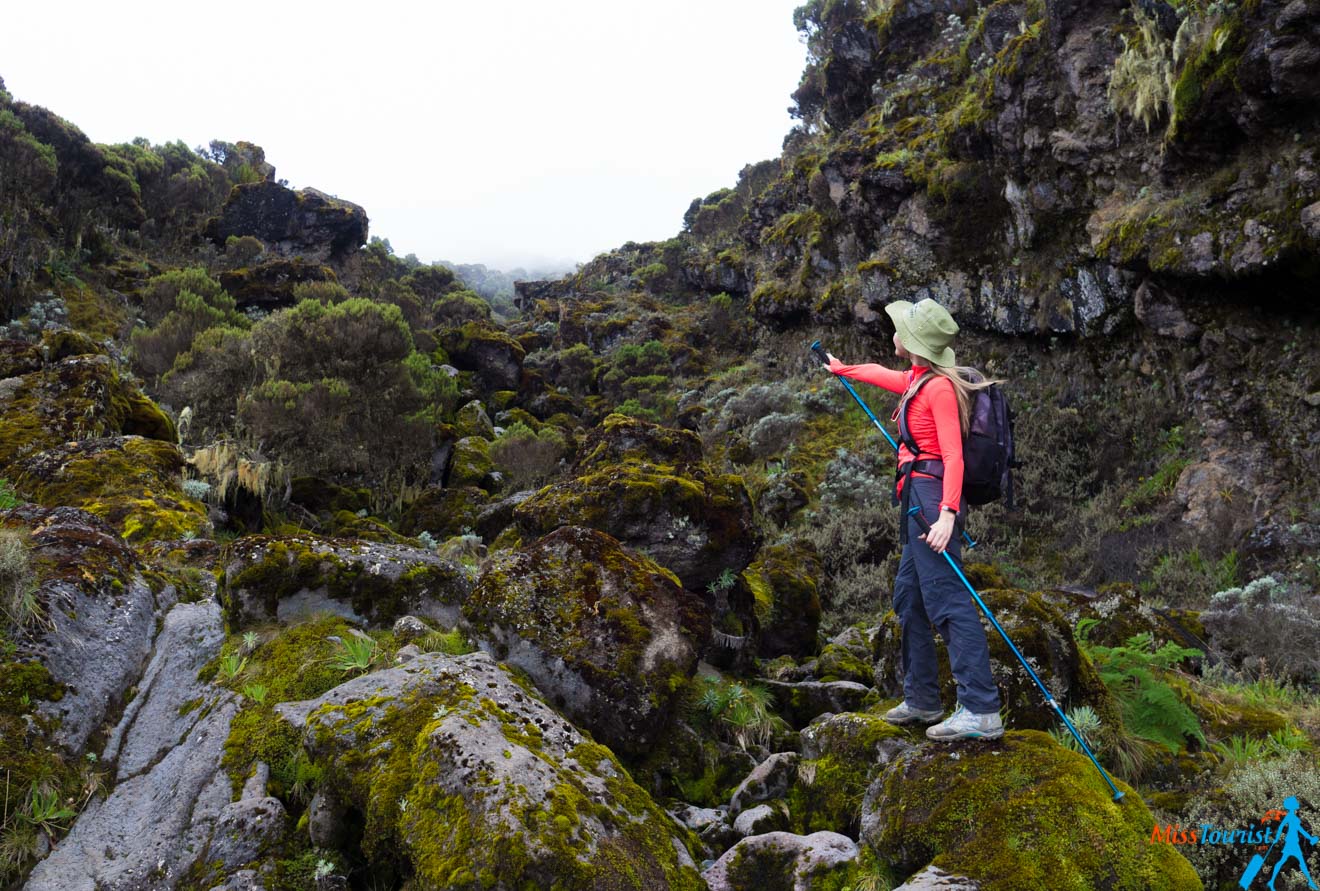
Try to maintain a good work/life balance before your Kilimanjaro hike, so make sure you do not overwork yourself. If you come to Tanzania already exhausted, you will just make it immensely hard for yourself to get to the summit.
As I mentioned earlier, even athletes can fall to altitude sickness!
Also, adjusting to high altitude beforehand would be perfect! How do you do this? If you can, I would highly recommend hiking a couple of easy mountains somewhere in your country beforehand. Interval training and learning deep breathing through yoga can be great helping methods.
For those of you who really want to eliminate this risk, you can take the preparation on a higher level and buy a home altitude training device. It is basically a special bubble that you put over your bed that creates oxygen-reduced air so that you are used to this kind of environment before going. Here is where you can buy one. The price starts from 400 US$.
2) Mental preparation

It is not the mountain we conquer, but ourselves.
This cheesy, inspirational quote is correct though – you should also prepare mentally for your Kilimanjaro expedition. This will be the hardest part – not the walking, the walking is not even so long (check my day-by-day Machame post and you will see that sometimes we would only walk 3-4 hours a day).
Please ask yourself the following questions:
- Are you prepared to be cold and wet? (It is not definite but very possible)
- Are you ready to wake up at midnight and walk for 7-8 hours in possible brutal weather conditions and with a lack of oxygen?
- Are you going to be ok using squat toilets and having no shower for a week?
- How about sleeping in a tent, does that seem doable?
Please remember that I am not trying to scare you, this is really not my intention. 🙂 I am merely trying to make sure you will be ready to face the difficulties because only like that you will be able to conquer that mountain.
To help you imagine the challenge even clearly, I’d like you to read this text that I wrote after the summit day on my Instagram:
5. Pack Smart

Taking all necessary equipment is very important. Remember – you won’t be able to reach the summit if you don’t have proper shoes and clothes. I know what I am talking about because a guy who was with me in the group did not make it partly (and I think mainly) because his clothes were completely inappropriate for hiking tall mountains (they were OK for up to day 3 or 4, but definitely not for the summit).
To make sure you did not forget anything, ask your company for the list of recommended items, as they will be happy to provide it. At the same time, it does not make sense to overpack, it is only as much as you can take with you (the porters have a limit of weight-per-person), so try to pack as smart as possible.
This is my list of recommended items (it is a combination of the recommended list from the company + some stuff needed from my experience):
Here is a video so you can easily see how all the items look like:
I know this is a very important topic, so I decided to write a detailed post about your Kilimanjaro Packing list with direct links on where you can buy each particular item.
6. You Will NOT Need To Carry All The Equipment Yourself
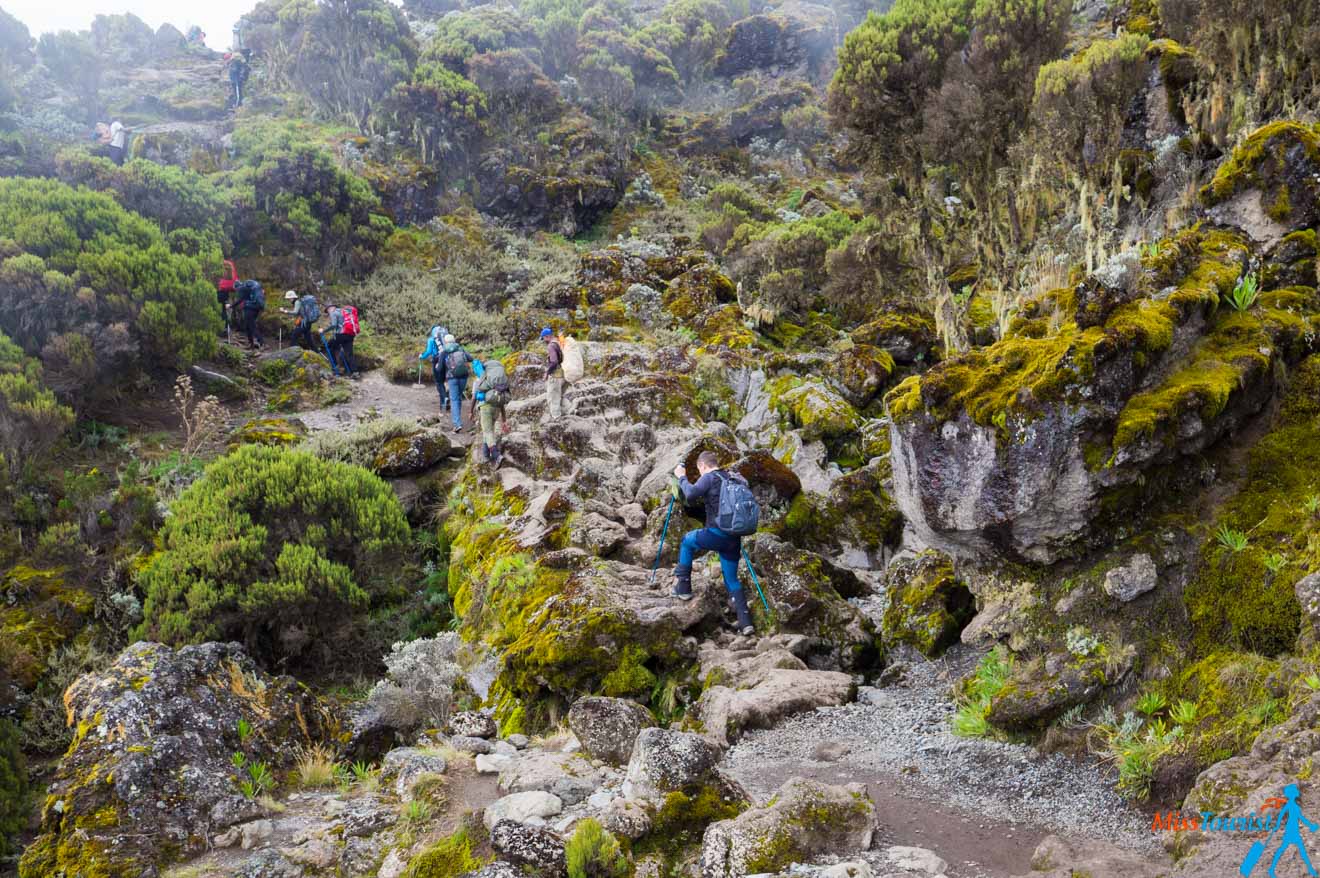
As I mentioned earlier, unless you are a professional mountaineer, you can NOT climb the mountain without the help of porters! Remember that, except for the clothes and the sleeping bags, you will need many other heavy items such as a tent, food, water, etc. It is really a combined effort of the whole team to help you reach that summit.
Even if you’d NOT want to use their help, having porters in your trek is required by the government and you will still need to pay for this service, so why not use it?
The weight limit is set by the government to 20 kg per porter and, as far as I understand, it is being respected. There are rangers that check the weight during some random stops and, if they find an overloaded employee, the company will pay a big fine. Some companies set their own limit to 15 kg.
So, having said that, I want you to know that thanks to your porters (they are awesome people!) you will NOT have to carry your bag with all the equipment during your trek – you will only be responsible for carrying your daypack. The daypack usually consists of some raingear, water, sunblock, and your camera.
These people are doing an amazing job to make your ascent possible, appreciate them.
This, by the way, leads me to the next point:
7. Keep In Mind That Tipping Is Expected
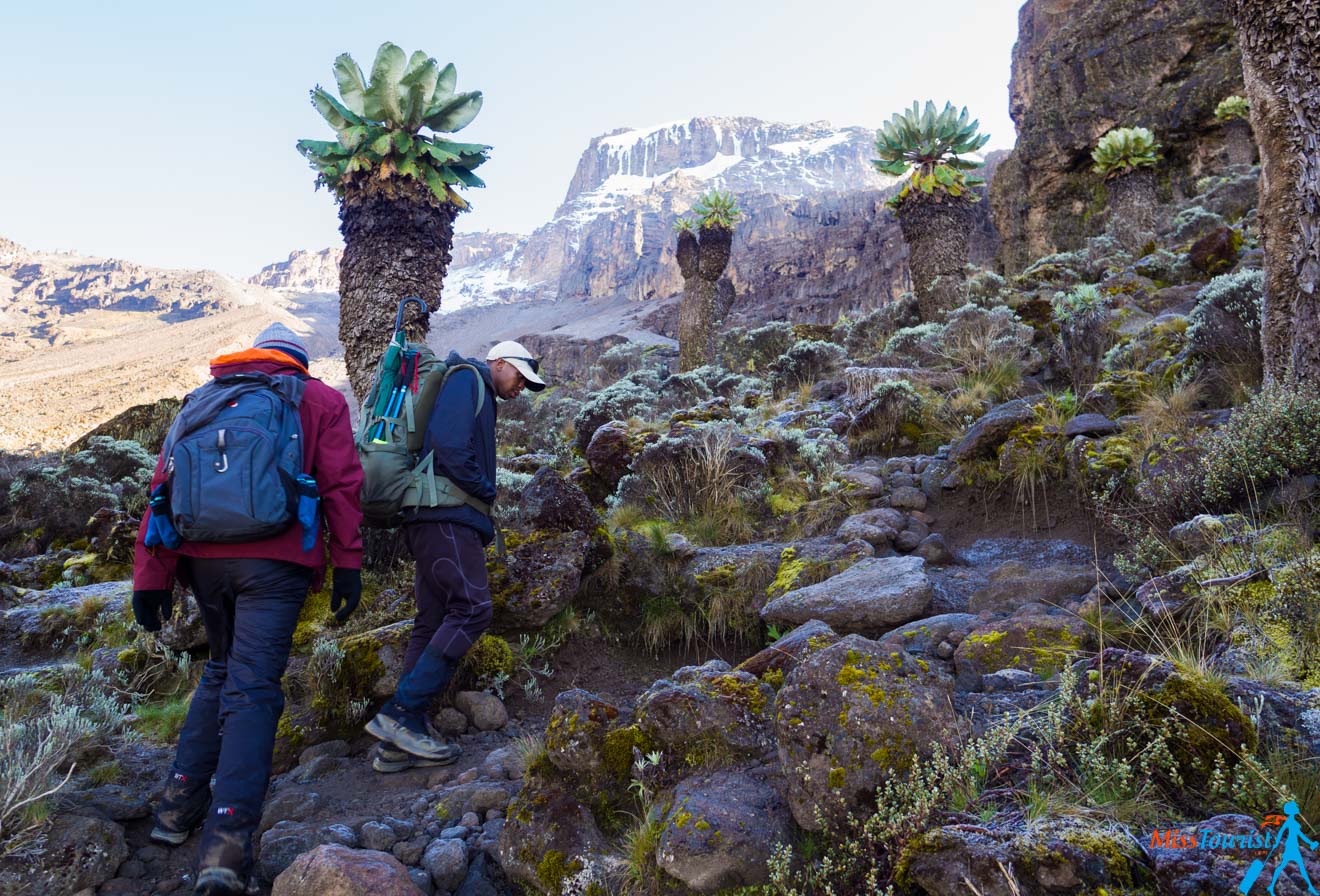
Tipping is not as much “optional” as it is necessary when it comes to your Kilimanjaro team. Sadly, the salaries of the locals are still really far from high and they rely on the tips you are going to leave. The final sum varies depending on the trek, the number of days and people in your team, but it comes down to about 10-15% of the total of your Kilimanjaro trip at the end. Please make sure to include that sum into your budget for Kili calculation.
I am pretty sensitive to this topic because one of the tourists in my group did not leave ANY tips after the hike. This was not only rude to the people who tried so hard to make his Kili hike possible but also really selfish because we had to cover at least a part of what was missing from his side. We couldn’t NOT do it because we saw the porters’ sad faces and the surprised face of our guide who said this NEVER happened to him before during his 14 years of practice!
If you think about it, the recommended tip value is only 10 US$ per day for porter FOR THE WHOLE GROUP, and I think these hard working and smiley people really deserve it, right?
The locals try really hard (I mean, just look at the pictures below, they are better humans! How can they carry so much? 🙂 ).
So I think it is only fair to help them a little bit (the money will go directly into their pockets, not the government, nor the company). This is also a good way to directly contribute to the economic improvement of the country.
You will be given envelopes on the last day where you can put your tips for the whole group. Your main guide will then distribute the sum to porters, cooks, and assistants in a fair way.
Now, the treatment conditions of the porters are MUCH better than a decade ago. As I said earlier, now they have weight limits and they are checked for proper equipment (my guide told me stories of porters dying before because they did not have good rain gear and proper boots). Nevertheless, I still saw porters wearing really simple and unsuitable shoes and felt pity about the weight they are carrying (they were so positive though!)
Thus, if you have some spare hiking clothing you are not going to use after the climb, you can donate them to the porters, they will highly appreciate it! My boyfriend left some pants and a jacket and we both left our thermoses. The guys were more than happy!
PRO TIP: This is a huge post and in case you are lost, I wanted to remind you that I negotiated a 5% discount for your for all tours with Altezza, how cool is that? To get your discount write them to this email (special one created only for my readers, tsss) – [email protected], they managers there know and you will get your 5% off for you and your friends!
| 💵 Avg cost to climb: | $2500-$3000 |
| 🛣️ Most popular route: | Marangu route |
| 💪 Recommend training: | 2-4 months |
| ☀️ Best month to climb: | January and February |
| 📅 How many days: | 6-7 |
BONUS: How To Choose The Best Company For Your Mount Kilimanjaro Hike
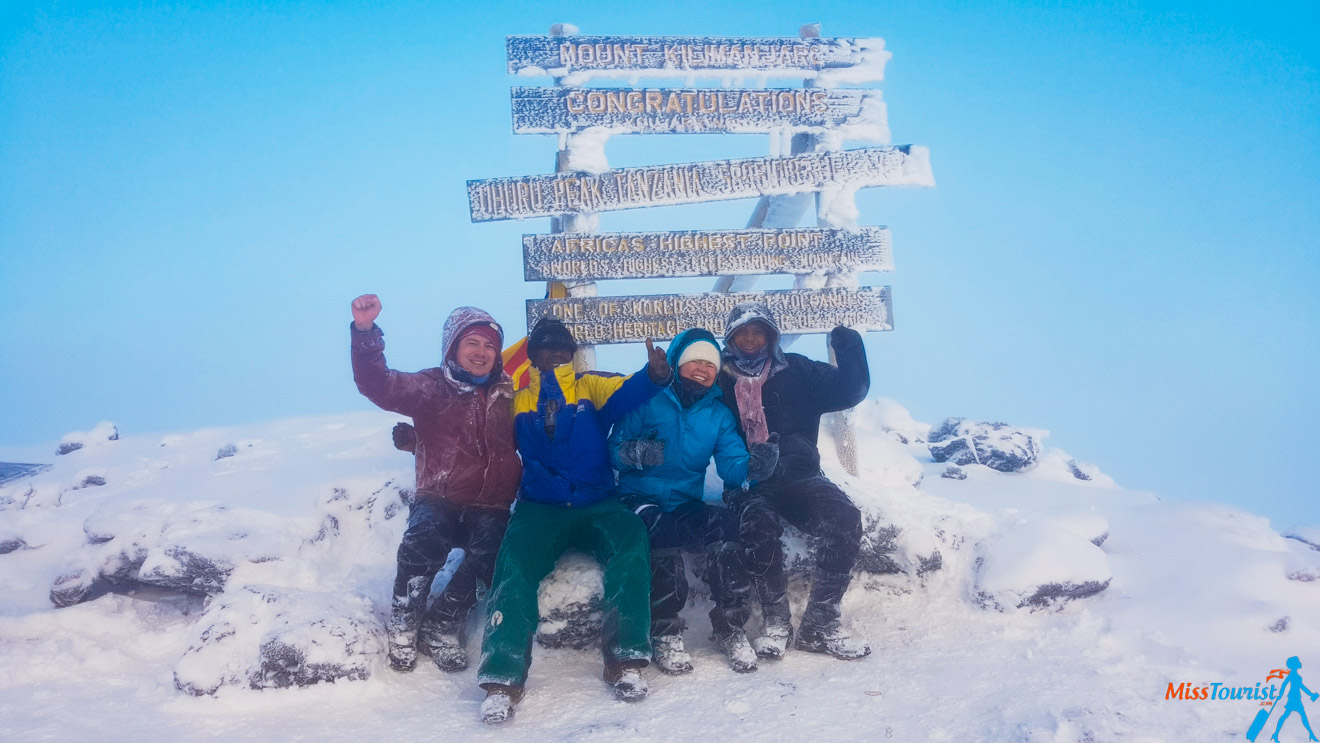
Uuff, this is an important topic as the success of your hike will mostly depend on your company choice. Above I gave you my recommendations for the best Kilimanjaro tour companies that you can trust, but if you want to make your own choice from hundreds of tour agencies, here are the questions you should ask them over the email:
- How much is it? If their Kilimanjaro price is low – why is it low? Stay away from these kinds of companies, it might be dangerous for your health, let alone the low probability of summiting. The reason why it costs a few thousand is because only the permit is US$ 800-900 per tourist and it is charged by the government. The rest is about US$ 1000 which is your accommodation, food, porter, and guides for about 7 days which have an important mission, so I would not say it is too much. Moreover, if the company sucks and you end up having a disastrous Kilimanjaro trek, is it really money saved after all? Think about it!
- How many years ago was this company founded and how many clients did they already have? (we are not expecting the exact number here obviously, just an approximate estimation)
- Do they provide airport pick-up and drop-off for their Kilimanjaro tours?
- Where are you going to stay before the hike? Is it a nice hotel with hot water or a hostel with no Wi-Fi?
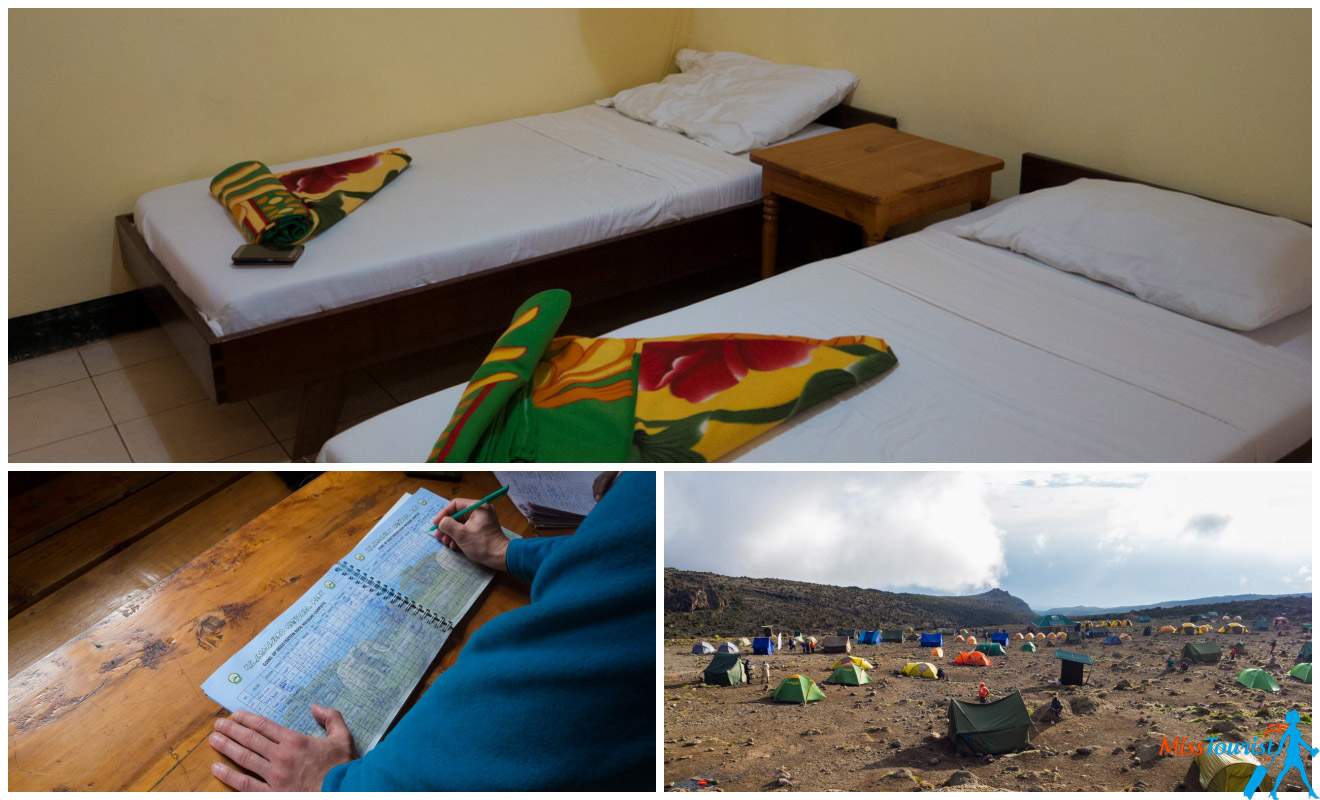
- How many years of experience does your guide have? Will he carry emergency oxygen with him during the climb?
- Will you have insurance in case something goes wrong? (this is not always covered, so I recommend having your own insurance. This one for example)
- What is the success rate of summiting for that specific company? While they can, of course, lie with their answer, you have the right to know. Your operator quality level is more important than your fitness level in this case, trust me!
- Very important – do they have positive reviews on independent blogs like mine or TripAdvisor? What about negative reviews? Do your own research!
- Will you have a doctor with you during the hike? How often will the health checks be performed? (it is quite rare to have a doctor on the trek, only big international companies have them)
- How many kgs are porters going to carry? The standard is 20 kg, but some companies establish their own limit of 15 kg (which means more porters and a higher price for you, but it is nicer for porters).
- How many people are they expecting for your dates and route to climb the mountain together with you? What is their average age? (I talk about the ideal amount of tourist in the group below in this post)
- If you have any food allergies or preferences, can they provide the appropriate food?
- How often does the company change their equipment? This is EXTREMELY important! If you will need to stay in a tent that doesn’t close properly because the zipper doesn’t work, that will make everything much harder. Also, check that the sleeping bags are for at least -15 C or (0 F). The warmer the better!
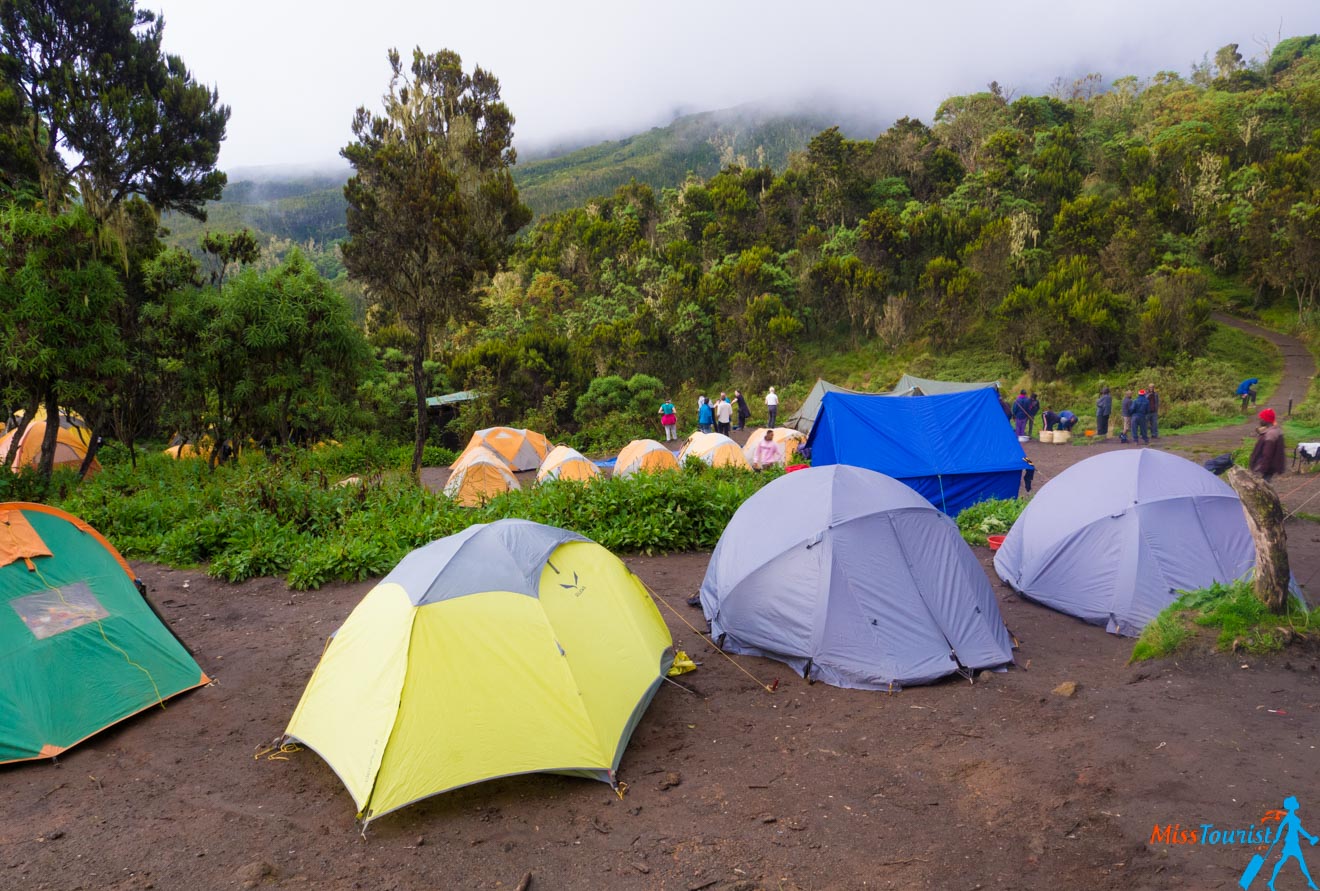
- Does the company list the prices openly and freely or do you have to “request the quote”? I honestly do not understand why some of them do not show their prices right away, it is a standardized tour and not many customizations are needed. Is there a reason why they don’t write the price right away? To my understanding, they just change the prices according to which country the tourist is from. Or they want to see if you will want to negotiate to get a better deal. So, I prefer not to spend my time writing an email, waiting for the reply, comparing the results from other companies, etc. If you are ok with going back and forth and negotiating, then it is totally fine, but I almost never write to this kind of sites.
- How much is the deposit and do they charge for bank transactions? If it is not a big international company or the one you can trust for sure, I would not feel ok transferring 100% of the sum. My company asked for 30% advance payment and I think this is acceptable (though I still did a background check on them)
- Is the company ethical? Meaning do they pay fair wages to their staff? Ask them if they provide their porters with good trekking gear and do not overload porters with weight?
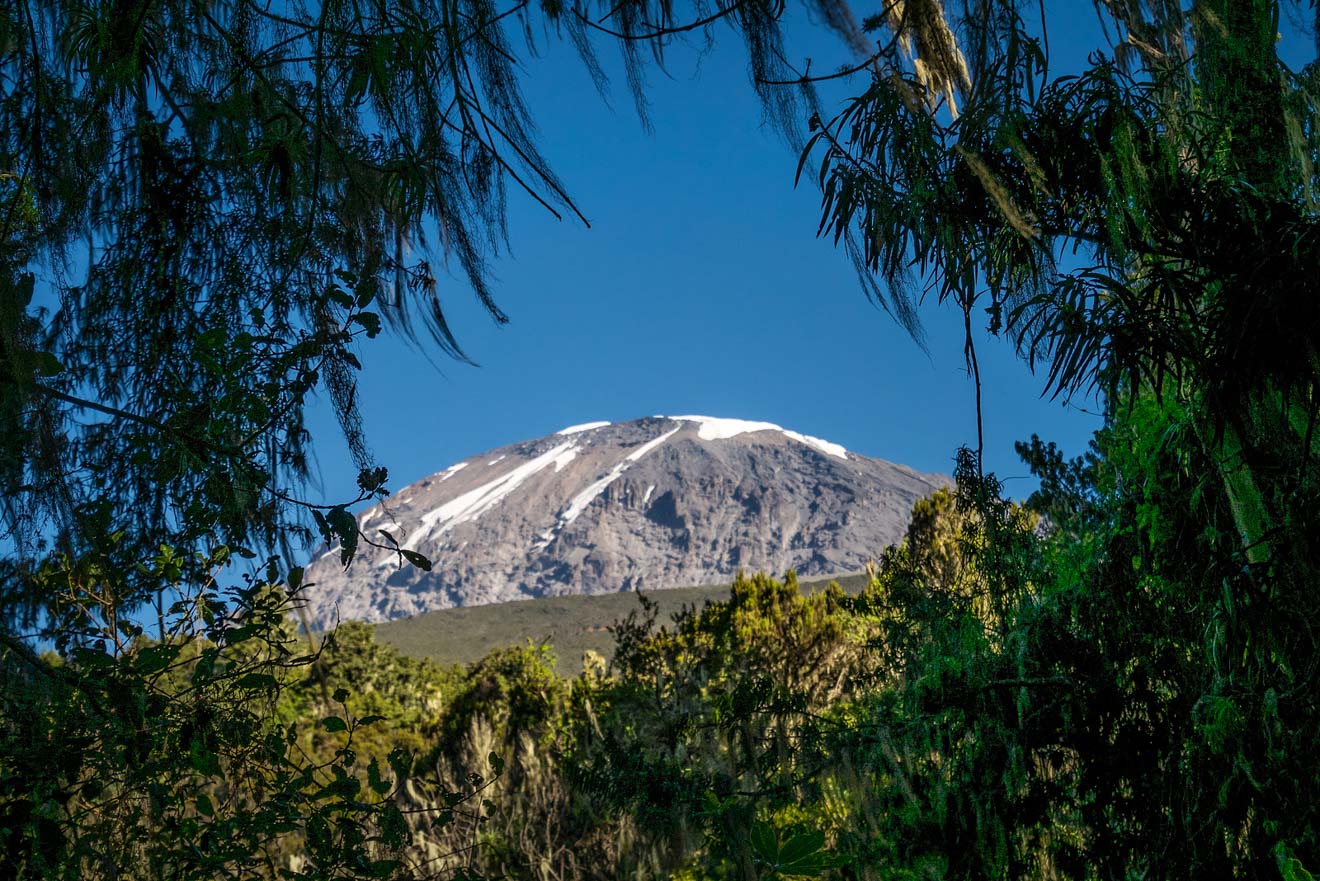
- If that is something special you will need – do they provide the private toilet service (yep, that can be arranged too), and if yes, how much will it be?
- Not so important, but nevertheless – what is your company’s attitude towards tourists’ entertainment on the mountain such as dancing performances every day? In most companies, porters and guides sing and dance for you every day to lift your spirit. If this is something you don’t feel comfortable with, you better double check in advance. Or, the other way around, if you feel that it would actually help you to raise your spirit, why not choose the company that organizes it?
Yes, the list of questions is super long, but please do not be afraid to ask questions and see if your company is responsive. If they are open and transparent that’s good, if not – then why not? Do they have anything to hide? It is better to figure it out now than later when you are already on the mountain.
More Practical Information About Kilimanjaro
Of course, I could not let you go without sharing some important information about the food, season, Kilimanjaro climb cost and some other useful tips.
So, here you go, here are some Kilimanjaro facts and info:
How to get to Kilimanjaro

There are basically 3 airports where you can arrive at:
1. JRO – Kilimanjaro International Airport
Most of the treks start from Moshi. In this case, it is the best decision to arrive at Kilimanjaro International Airport (JRO). It is about 1-hour away by driving (43 km).
If you, like me, continue with a safari tour afterward, it usually starts and finishes in Arusha and it is about 1.5 hours driving to JRO airport (60 km).
2. ARK – Arusha Airport
There is also the option to arrive at Arusha Airport (ARK), but there are not many international flights that arrive there. You might arrive there if you fly internally, for example from Zanzibar or Dar es Salaam (the capital). Arusha Airport is only 8 km away from Arusha city center.
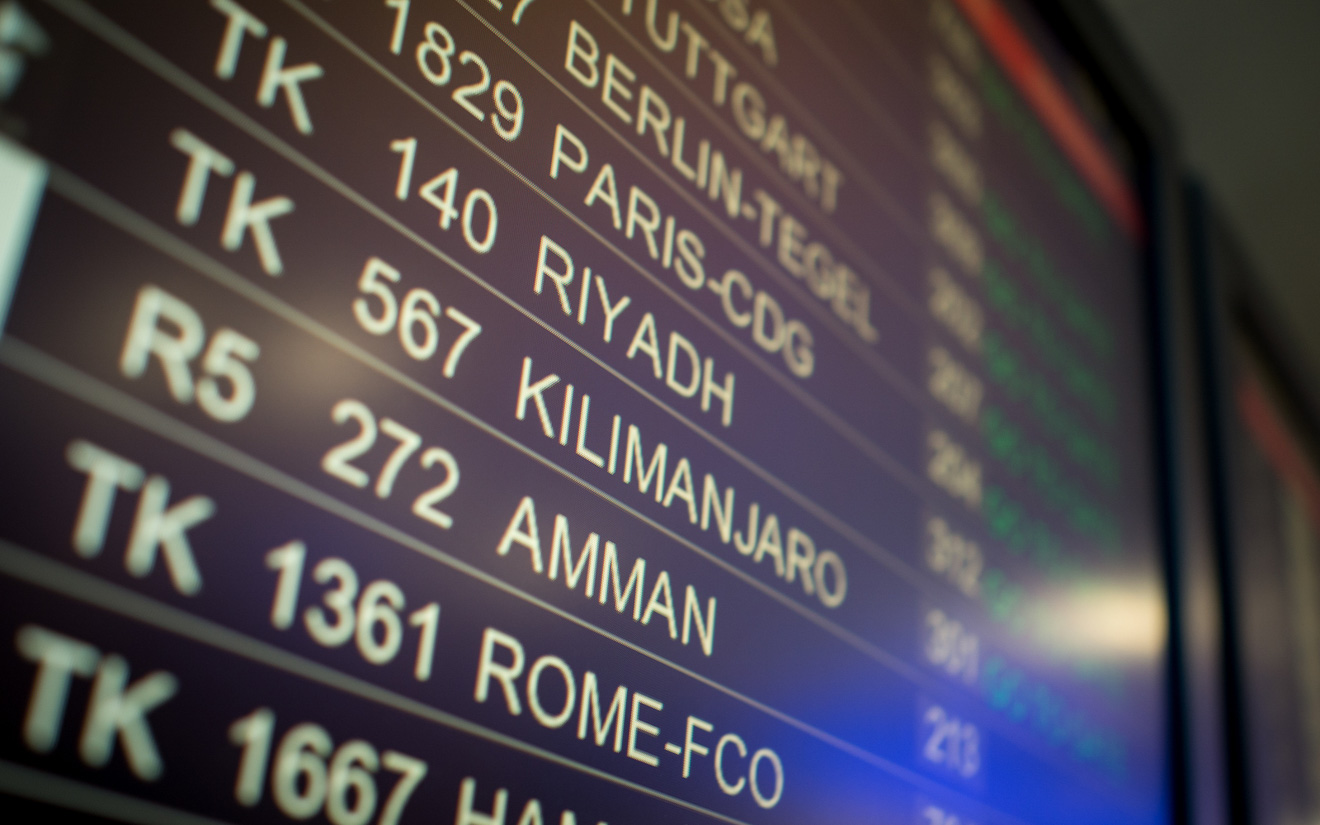
3. NBO – Jomo Kenyatta International Airport, Nairobi
I know that many people fly to Nairobi (Kenya) first and then take a bus or any other means of transportation.
If you go by bus, Nairobi to Arusha is about 6-7 hours with the border stop, and Nairobi to Moshi is 7-8 hours.
NOTE: Currently, if you arrive from Kenya (by land or if you just had a transfer in Nairobi), you will need to be vaccinated from yellow fever. If you do not have that vaccine, I believe they can do it at the border for an extra payment.
I advise you to check Skyscanner for your dates and check both airports – JRO and NBO.
How much does it cost to climb Kilimanjaro?
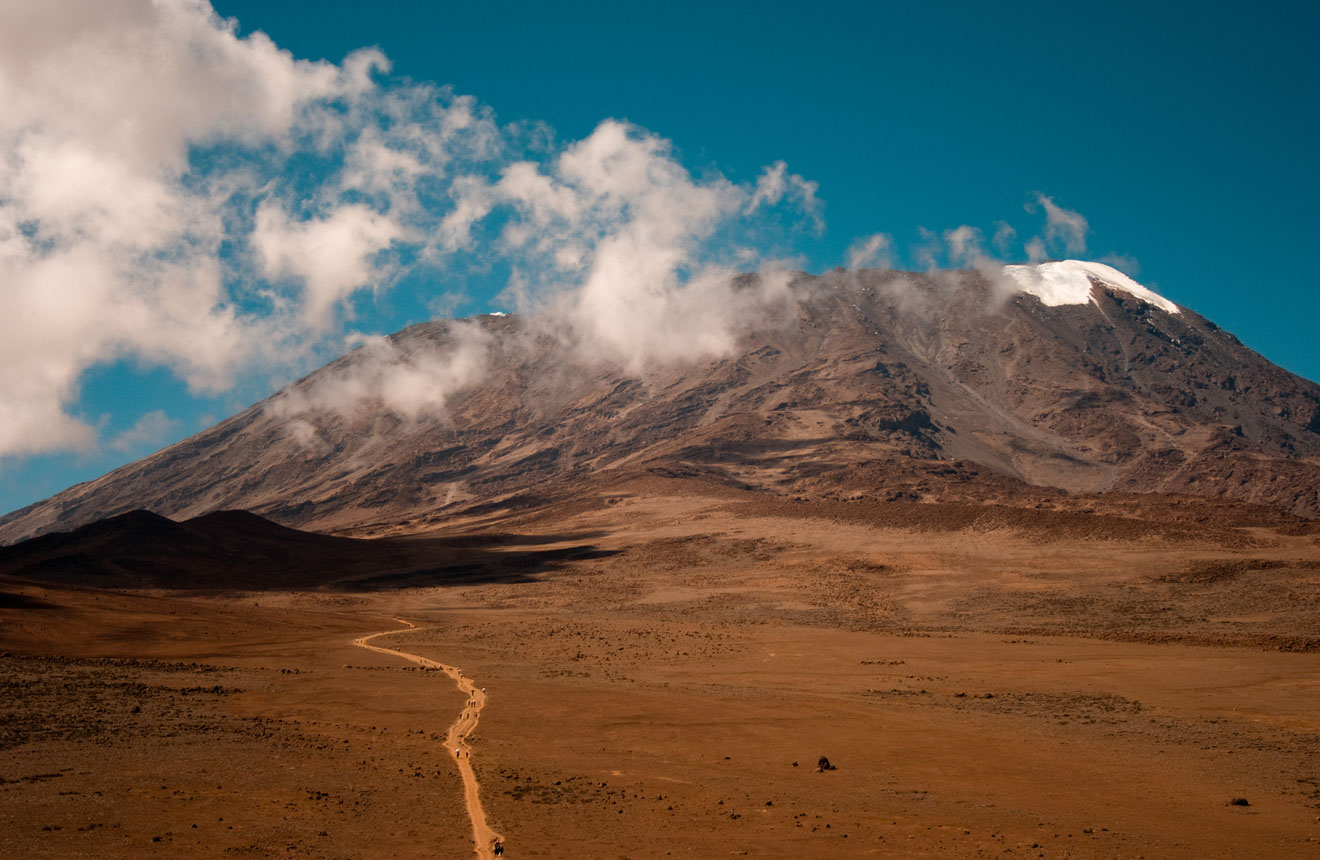
I have already given you the estimated prices on how much each of the treks should cost, but here is an average of all of them for you to know what kind of costs to expect:
Total: +/- 2000 US$. It can be a bit more or a bit less depending on the trek and tips of about 200 US$ = ~ 2200 US$
You only need to add the flight cost and the cost of equipment to this and you will end up with your final price.
I think by now I convinced you that going for the cheapest option is basically a waste of money (and it is also dangerous). So I would not look into something that is less than 1800 US$ per person for a 7-days hike (this, of course, does not mean that everything above that is a good company by default, you will need to do your research). My hike was 2.500 US$ per person (Machame route, 7 days), plus the tips.
MISS TOURIST DISCOUNT: Altezza, the company I can vouch for is offering a 5% discount to all my readers, yay! To save hundreds of dollars all you need to do it to drop them a message to THIS SPECIAL EMAIL – [email protected]. You are welcome! 🙂 NOTE: it only works for my readers, they are not able to give you a discount if you first booked through the official website and then found this discount.
The larger the group is, the lower the price per person can be (I would not recommend going in a very big group, though, because each tourist has about 4 people assisting him, so you will end up with a small army of people!).
How about buying a last-minute ticket from a local operator to save some money? If you are already in Arusha or Moshi (this is where most tour companies are based), it is possible to buy the tour on the spot and it will be a bit cheaper. I, personally, would not recommend this option to people who have limited time because most good companies will be booked out or you might need to wait until a certain date to do your hike.
How many people should be with you on the hike?
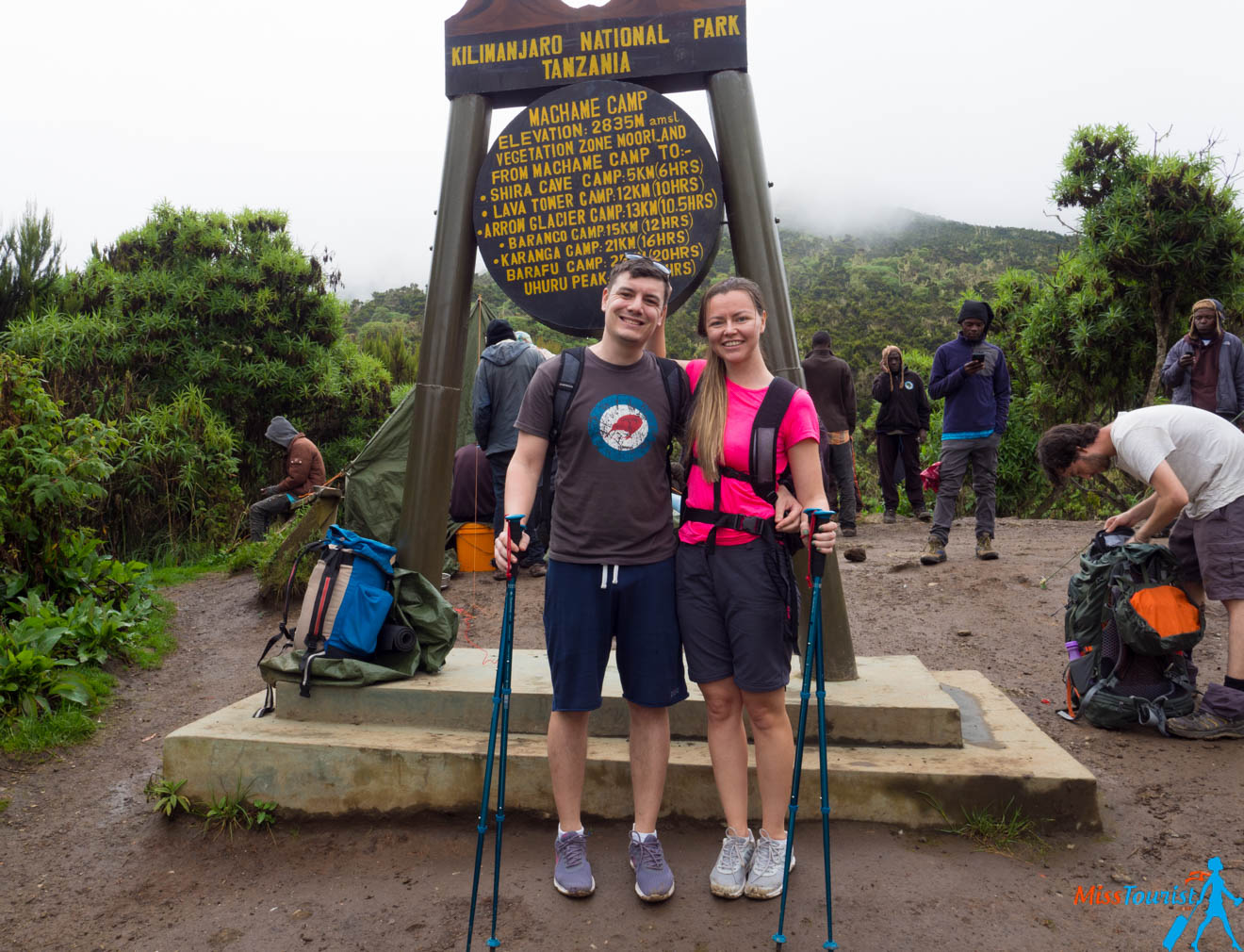
In my opinion, the optimal amount of people in the group will depend on the type of traveler you are:
- A solo traveler: it probably makes sense for you to join a group (more about the number of people below)
- A big company of friends/ family: maybe it is better to opt for a private tour so that you could go at your own pace
- A couple: depending on how you feel about it – you can either opt for a private tour, either join a small group (5-6) people. I and my boyfriend preferred joining a group
- A very fast (slow) hiker/ professional photographer: I would recommend a private tour so that you can go at your own pace. You will not have to wait for anyone if you are fast and you will not need to make people wait for you if you are walking slowly while taking many pictures and videos.
Group tour or a private tour for Kilimanjaro – which one to choose?
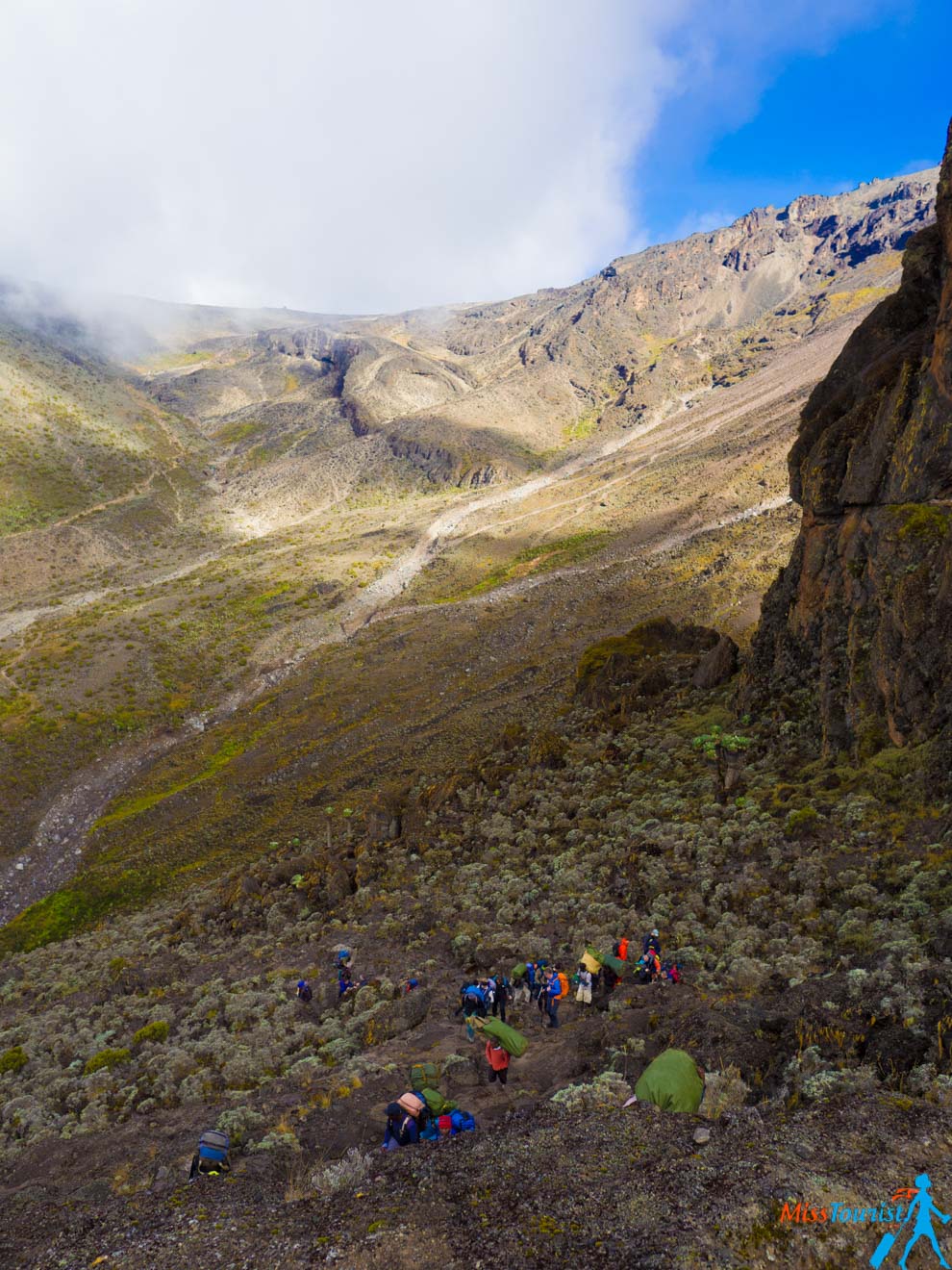
The groups are usually made of up to 15 people, which means over 50 (!!) people in the team altogether (there are about 4 porters for each tourist).
Small group tours are great for meeting new people and private tours are good because you can go at your own pace and you do not need to wait for anyone or stop as long as you want.
I think the optimal group size is about 5-6 tourists as you will meet new friends and the size is not that big that you will need to wait for somebody all the time. Add 4 porters per tourist to that and we will end up with quite a big group, even if there are only 4 people climbing the Kilimanjaro summit.
I would not go with a group that has more than 10 people in it and I would also double check that they are in the same age group (more or less).
MY EXPERIENCE: There were just 3 of us in the group – me, my boyfriend and one more guy (we just assumed we are joining a bigger group, so we did not really ask). Considering the fact that our companion wasn’t the nicest person in the world, I would have actually preferred to be in a bigger group. Long story short: he hated the trek and the whole organization of it, he did not make it to the top because he wasn’t prepared and he decided to blame the organizers for it (who worked hard for his success) and he did not even leave them any tips at the end.
Anyway, when we split (he did a 6-days trek, we did the 7-days one), we were trying to find some friends to talk to after dinner and it turned out to be not that easy. Even if everyone is super positive and nice on the trail, you can’t really approach people because they were all “hiding” in their own tents. So, unless you “invade” each tent, it would not be possible to know who lives where. That was just a minor disappointment, I guess it would be more fun to summit with a group of like-minded positive people more or less my age!
So, if you feel the same way, I would say go with a small group – 5-6 people is an ideal size.
What is the highest point of Kilimanjaro?
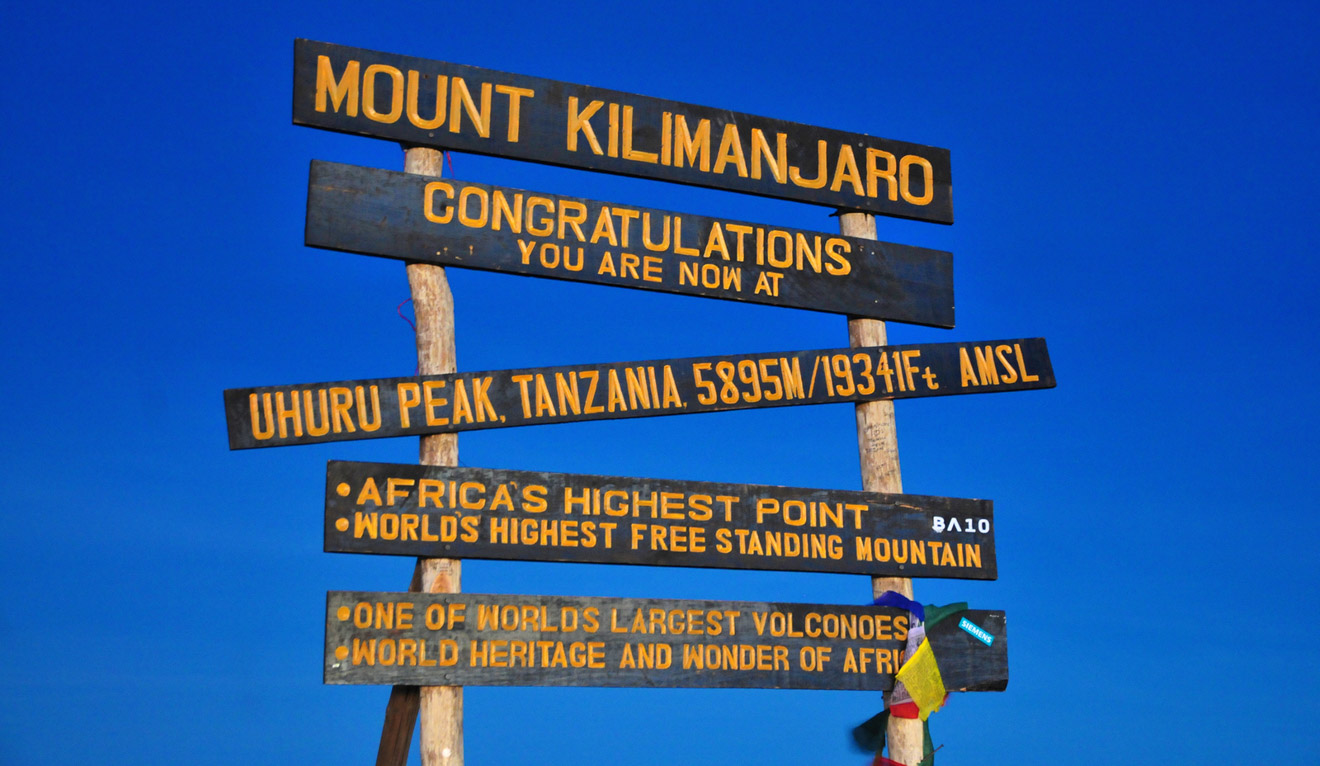
Mount Kilimanjaro’s height is 5 895m (19 340ft) and the name of the highest peak is Uhuru Peak.
The second highest point is Stella Point at 5.739m (18.829) and you will reach it 40 minutes before Uhuru.
NOTE: Many people turn back once they reach Stella Point and they decide not to go further for Uhuru which is just 150m higher. Honestly, this is something I cannot understand – why you tried so hard for all these days only to turn back when you only have 40 minutes left?
Is it dangerous/hard to climb Kilimanjaro?
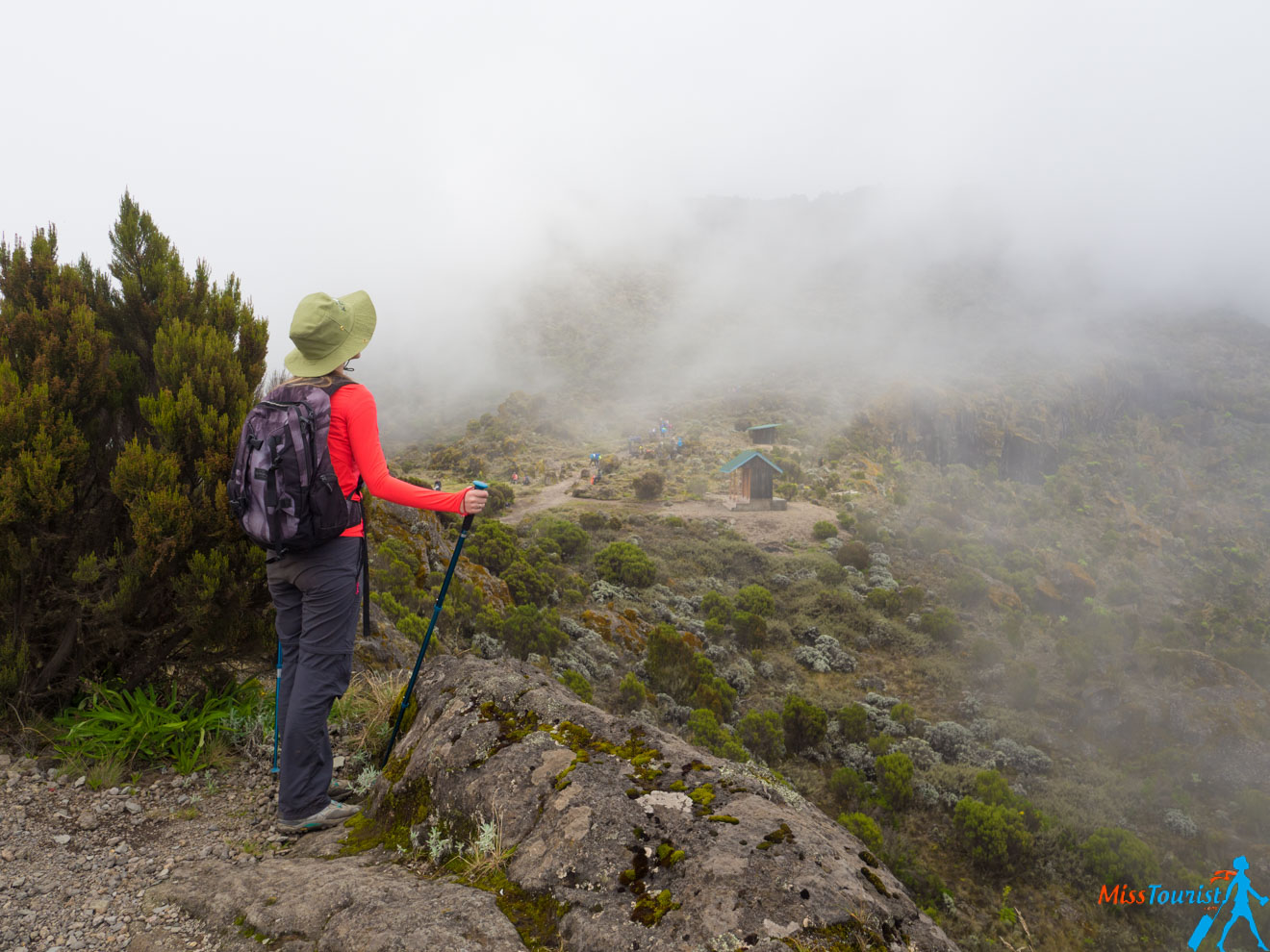
Well, let me put it this way – Hiking Kilimanjaro is definitely not a walk in the park. It is very much doable, but hard. But you will be proud of yourself, I promise.
Yes, it is doable. Yes, thousands of people do it but, chances are, it will be the hardest thing you will do (it was so for me)!
Is it hard? It is not easy – it is a constant fight with yourself and with your willpower that goes on every day.
It is definitely far from how dangerous Everest is but still, statistically about 1.000 people get hospitalized and about 10 deaths are reported yearly, mainly because of mountain sickness (AMS).
I said it before, but I will repeat it – I strongly recommend consulting your doctor before you make the decision on going to Kilimanjaro. If you have respiratory problems, serious knee injuries or anything of that sort, I think it is better not to risk your life.
All in all, I would not call hiking Kilimanjaro risky or dangerous – you will be under the constant supervision of your guide (and we now know how to choose a professional one using my tips, right?). If you won’t feel good all of a sudden, do not worry, you can turn back at any time and your guide will assist you down the mountain. If you don’t feel good somewhere close to the summit, they can pick you up with a helicopter and deliver to the hospital in Arusha. But as I said, this cases are rare.
Is it worth it to climb Kili?
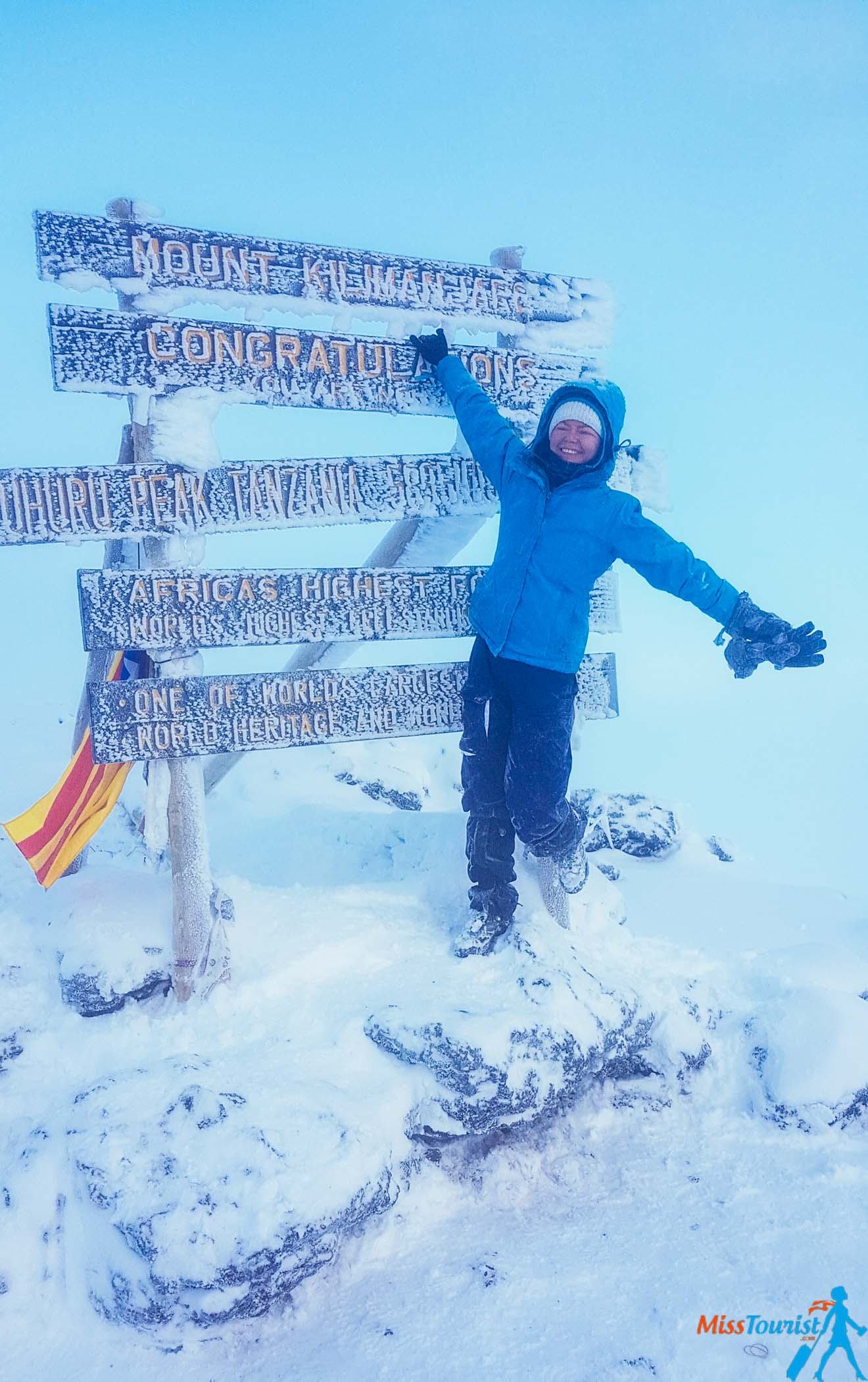
Now that we discussed how hard it is to climb Kilimanjaro and I must have really scared you, let me sweeten it up by saying –
I would not trade a single moment of that hike, it was so worth it!
Climbing Kilimanjaro was one of the best things I have done in my life and one of my brightest experiences for me and my boyfriend that we will cherish for a long, long time afterward.
Honestly, I couldn’t hold my tears when we made it to the top – these are the moments we live for! It is life-changing and yes, it was worth it, 1.000.000 times worth it! (You can see it in my Insta stories by the way! If you haven’t yet, go to @misstourist and click on “Tanzania” under Highlights. Don’t forget to follow me too! 😉 )
So yeah, if you are still thinking about it and you are not sure about your decision – it is worth it, have no doubts about it! These memories with stay with you forever and you will never be the same after this experience.
What is the food like on Kilimanjaro Mountain?
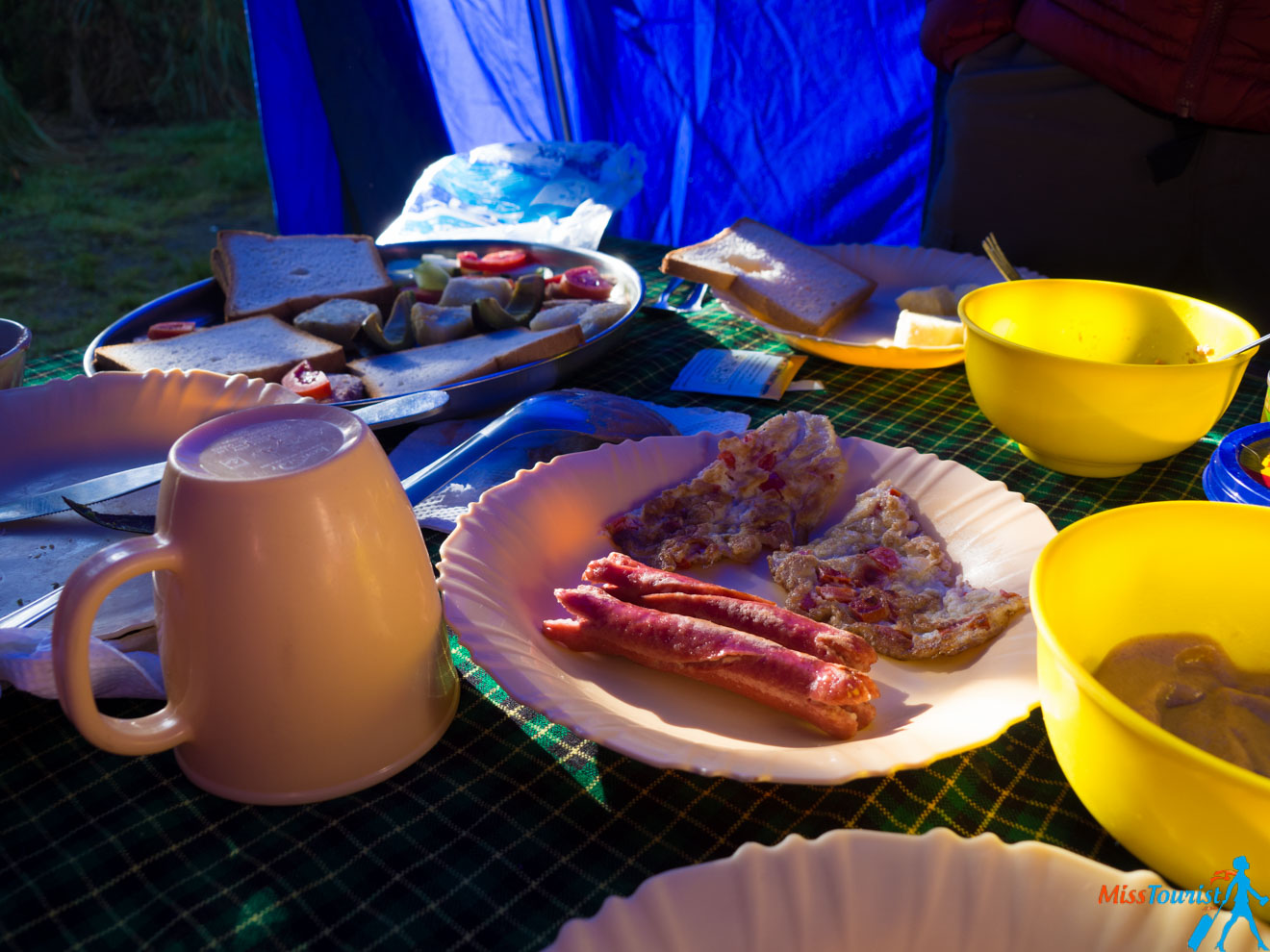
You will be surprised, but the food menu in Kilimanjaro is really diverse and really good!
As I have been told by my guide, the majority of Kili tour companies (excluding the super cheap ones) have an almost identical menu because it is proven to work.
The cooks are doing their best to give you high-energy food, many fruits, and vegetables. We had fried eggs for breakfast, soups, and meat for lunch and soup and pasta for dinner. There are always plenty of hot drinks such as tea, coffee and powder hot chocolate that you can access at any time when you are at the camp.
The food is served 3 times a day in a special dining tent (sometimes you will be given a lunch box for eating during the day) where you will be able to sit normally without bending over.
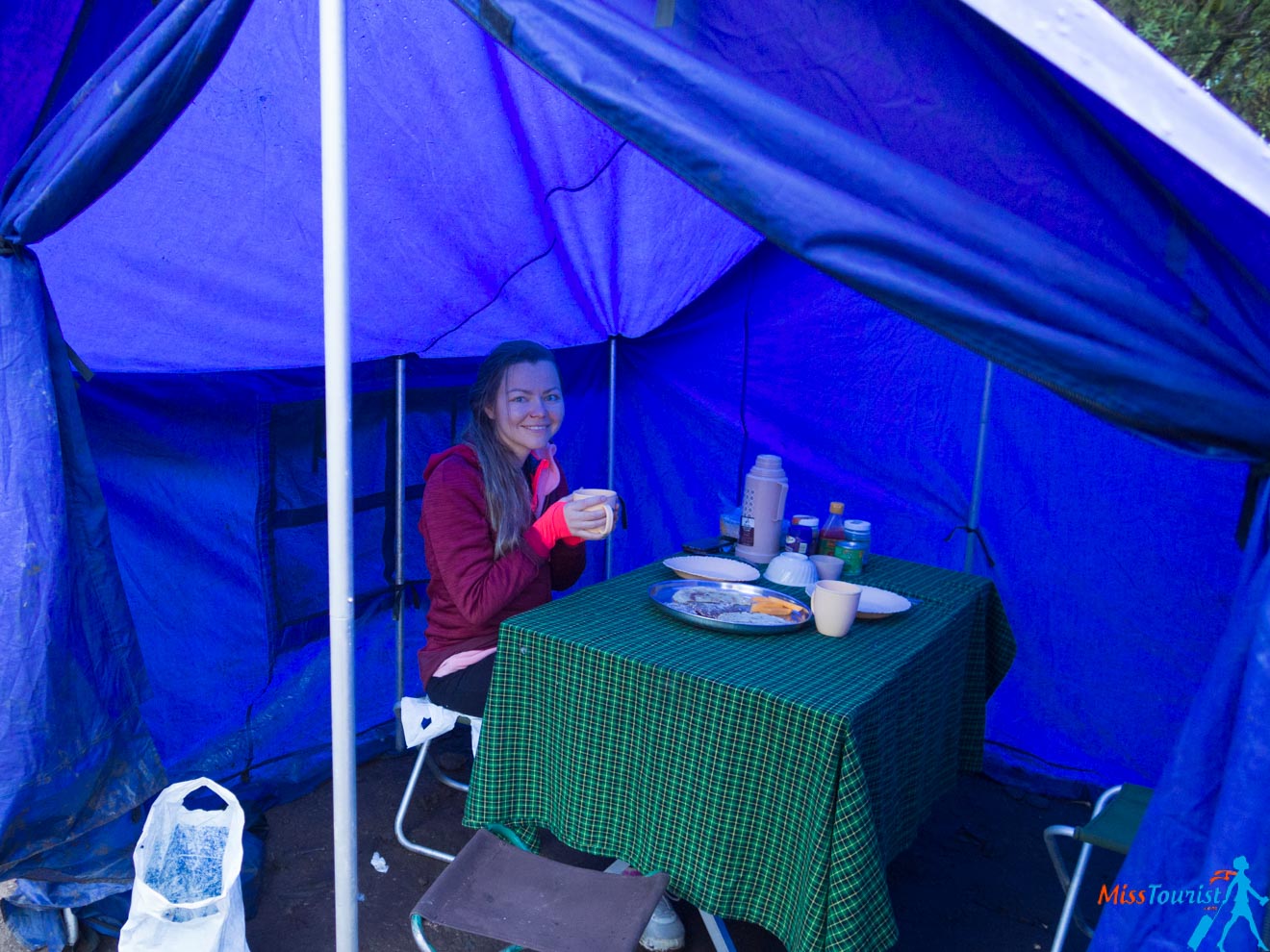
You certainly should not expect a high-end Michelin star restaurant, but given the fact you are going to be veeeery far from civilization, the cooks are doing an amazing job!
NOTE: Vegetarian, vegan and gluten-free options are usually available, make sure to double check this with your potential tour provider.
When to climb Kilimanjaro?
Kilimanjaro is located very close to the Equator, so it is always warm at the bottom of the mountain and, of course, always unpredictable at the top.
That is why almost all months are good for Kilimanjaro trekking. What you want to avoid, though, is the rainy season (mid-March to mid-May and sometimes November).
I highly recommend NOT summiting during those months because you will be constantly wet (there will be no place to dry your clothes) and you won’t see the views because of the clouds! I once went to Nepal during the raining season and, trust me, I wouldn’t repeat the experience – I had no views and there was constant rain. It is a big effort and why would you try your luck and waste your vacation?
Outside these periods, the weather is mainly mild and dry, but, of course, you might catch some rain and no one can promise you that you will have amazing weather. For instance, I climbed at the beginning of January and we had a pretty bad rain during the last day and a snowstorm during the summit night, so you never know!
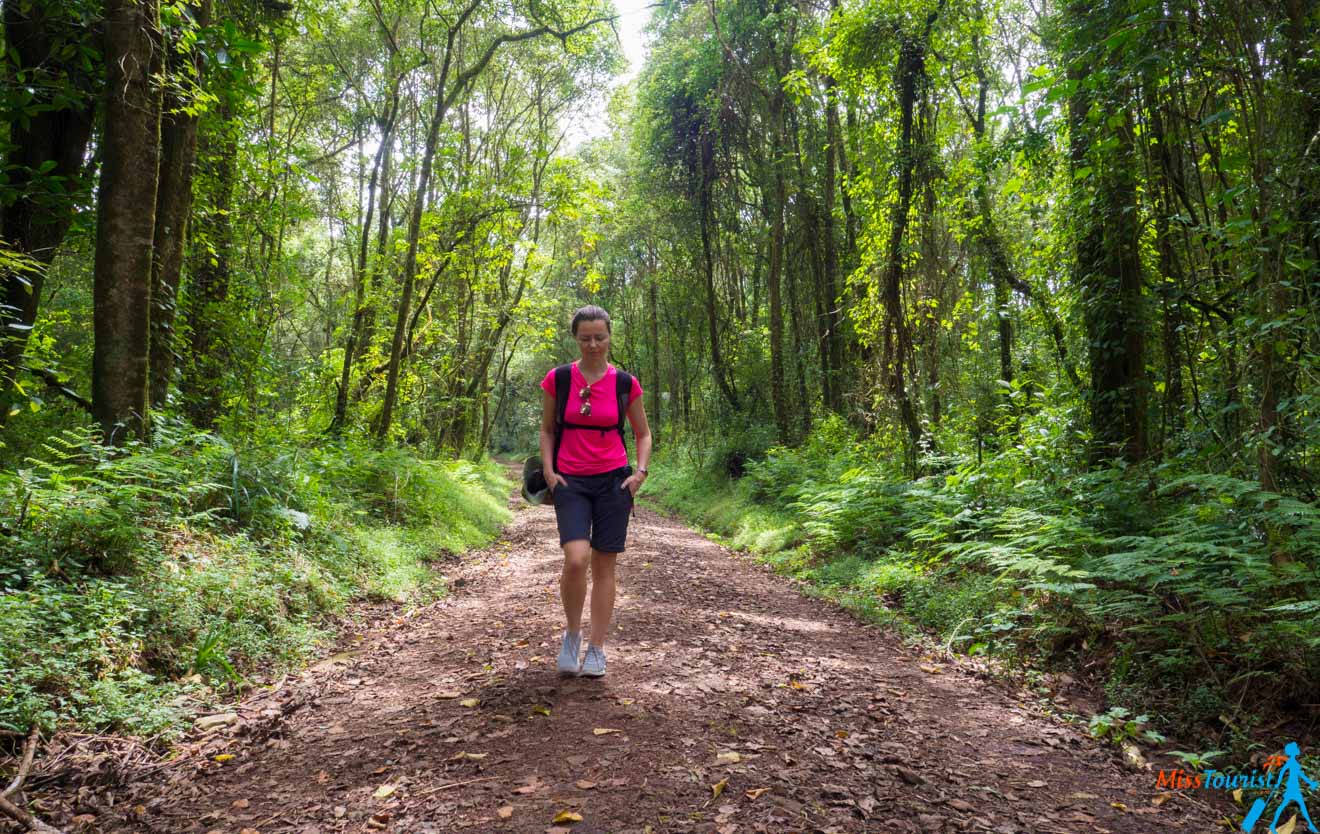
How about the best time to climb the mountains in terms of the number of tourists?
If you want to avoid the crowds, the best time to climb Kilimanjaro is either the rainy season (not recommended), either the shoulder season if you are willing to take a gamble. The shoulder months are December, March, and June. Also, try to avoid the full moon time (no kidding here!) as many people try to summit Kilimanjaro during the full moon. Rongai and Shira route are not so popular, so it makes sense to use one of the two if you are determined to escape the crowds.
Another great way to avoid the crowds is to start much earlier than everyone else and/or use alternative campsites, but for this, you will either need to take a private tour or to have an approval from the whole group beforehand.
How cold can it get on Kilimanjaro?
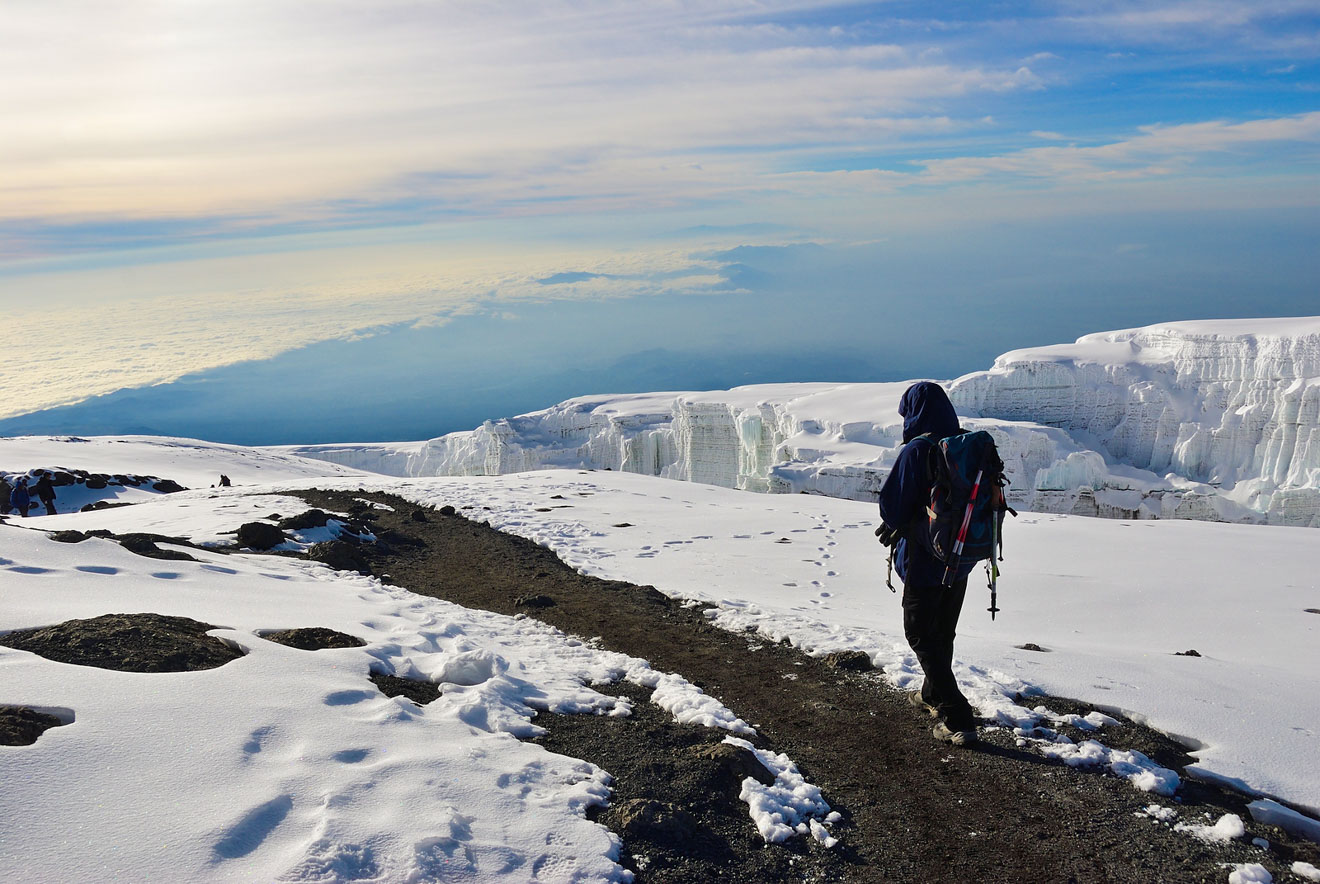
The weather on the mountain can change in 5 minutes from bright sunshine to heavy wind with hail. I have seen it with my own eyes, it is crazy! Kilimanjaro has its own microclimate!
On the summit night, which is the coldest night for obvious reasons, the Kilimanjaro temperature can get from -15 to -30° C (5 to -22° F), so you will be wearing many layers (refer to my post about What to pack for Kilimanjaro for details, please). I do not want to scare you, but you should know what to expect and be prepared for it.
MY EXPERIENCE: I think there was about -15° C when I did the ascent, but there was also a strong snowstorm, so I think I was quite unlucky. Our guide said that it is usually much easier to ascent than it was that time. Oh well, I still made it and I hope you will be luckier!
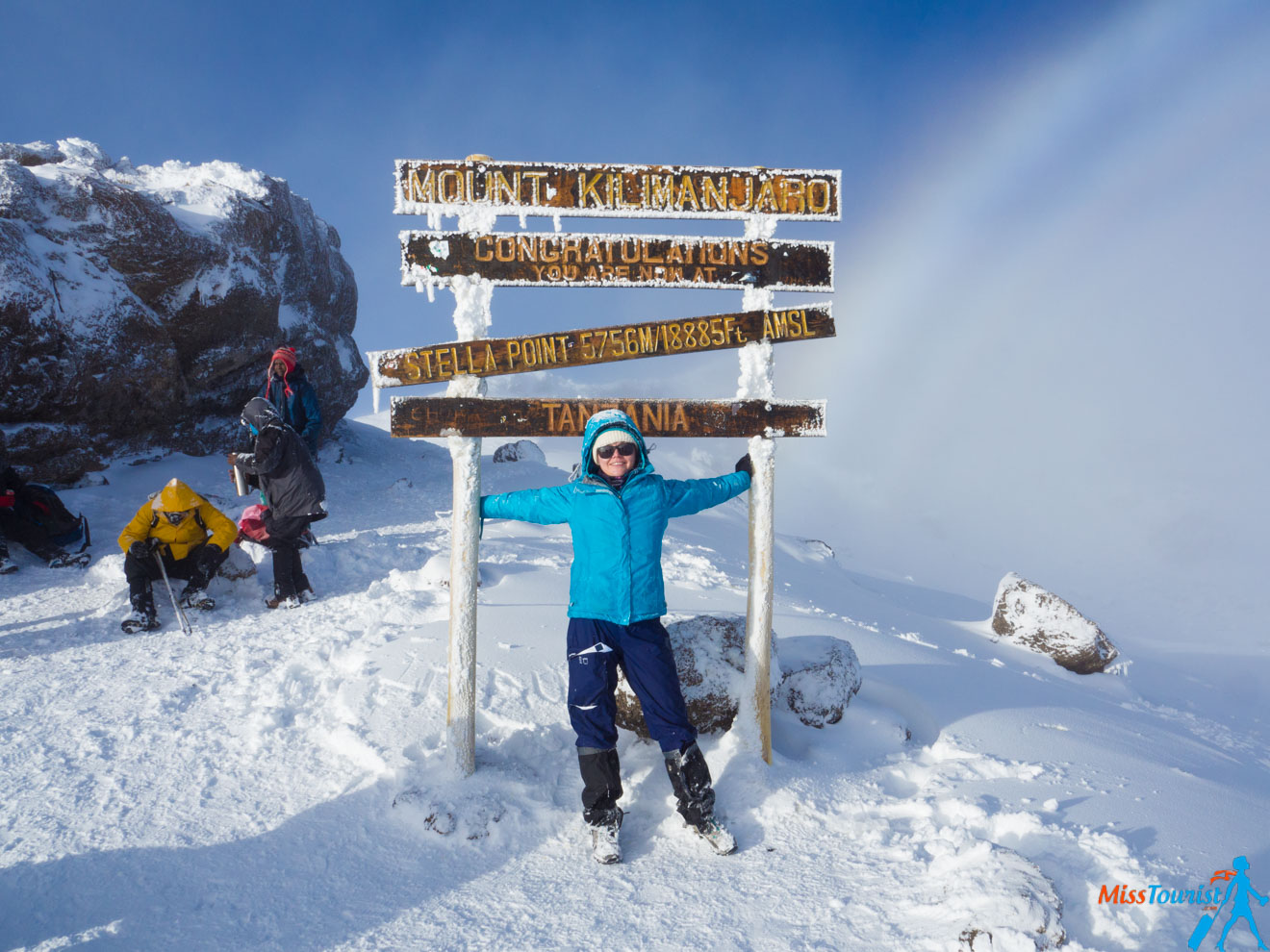
What about all the other days? The rest of the days are quite OK – it usually does not get below -3° C (26° F) during the night and the average temperature during the day is about 15° C (it highly depends on the Kilimanjaro elevation level you are at).
Some people try to match the full moon date with their summit day because it is supposedly warmer. It might be true, but trust me, the weather is changing literally every 5 minutes up there on the mountain, so I am not sure it would help much if there is a snow storm.
What are the symptoms of altitude sickness?
Do not worry, unless you are an experienced mountaineer, it is absolutely normal to experience mild altitude sickness. Most of the people I met on the mountain had it in a light form.
The most common symptoms of Acute Mountain Sickness (AMS) are light or heavy headache and a loss of appetite (I could not avoid these myself either). The harder symptoms are unexpected nose bleeding or vomiting. If these happen to you more than once, sadly, you will have to turn back – the risk it too high.
Will I need any special vaccination like yellow fever vaccine?
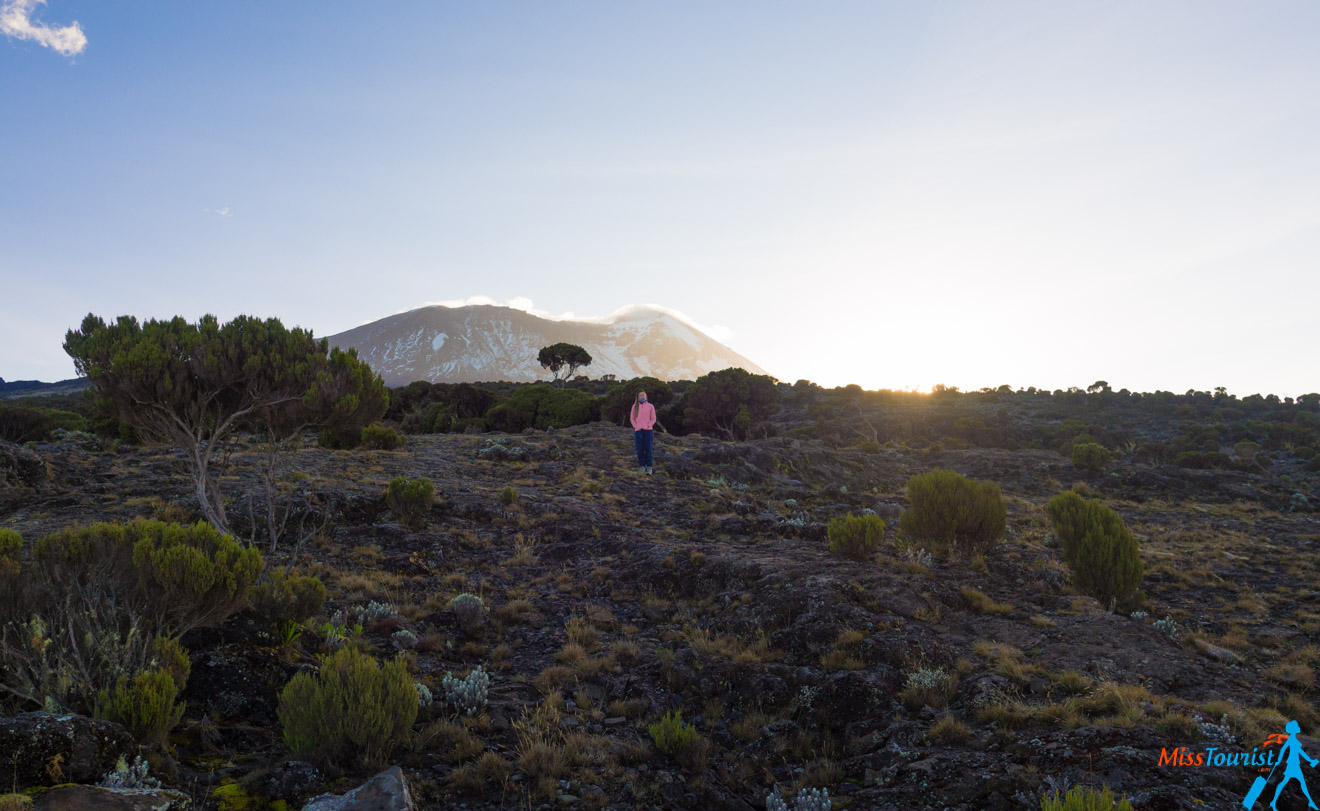
Here is the list of vaccines that are RECOMMENDED by the World Health Organization (WHO).
Yellow fever vaccine is only required if you fly from (or have a layover in) countries with a high risk of yellow fever (such as Kenya and Rwanda).
I did the yellow fever vaccine before and I had a certification with me just in case, but no one asked me about it (my connection flight was in Oman and this country is NOT on the list of high risk for yellow fever).
Do not worry if you forgot about it, you can usually do the vaccine right at the airport, upon arrival.
Is there internet connection on Kilimanjaro?
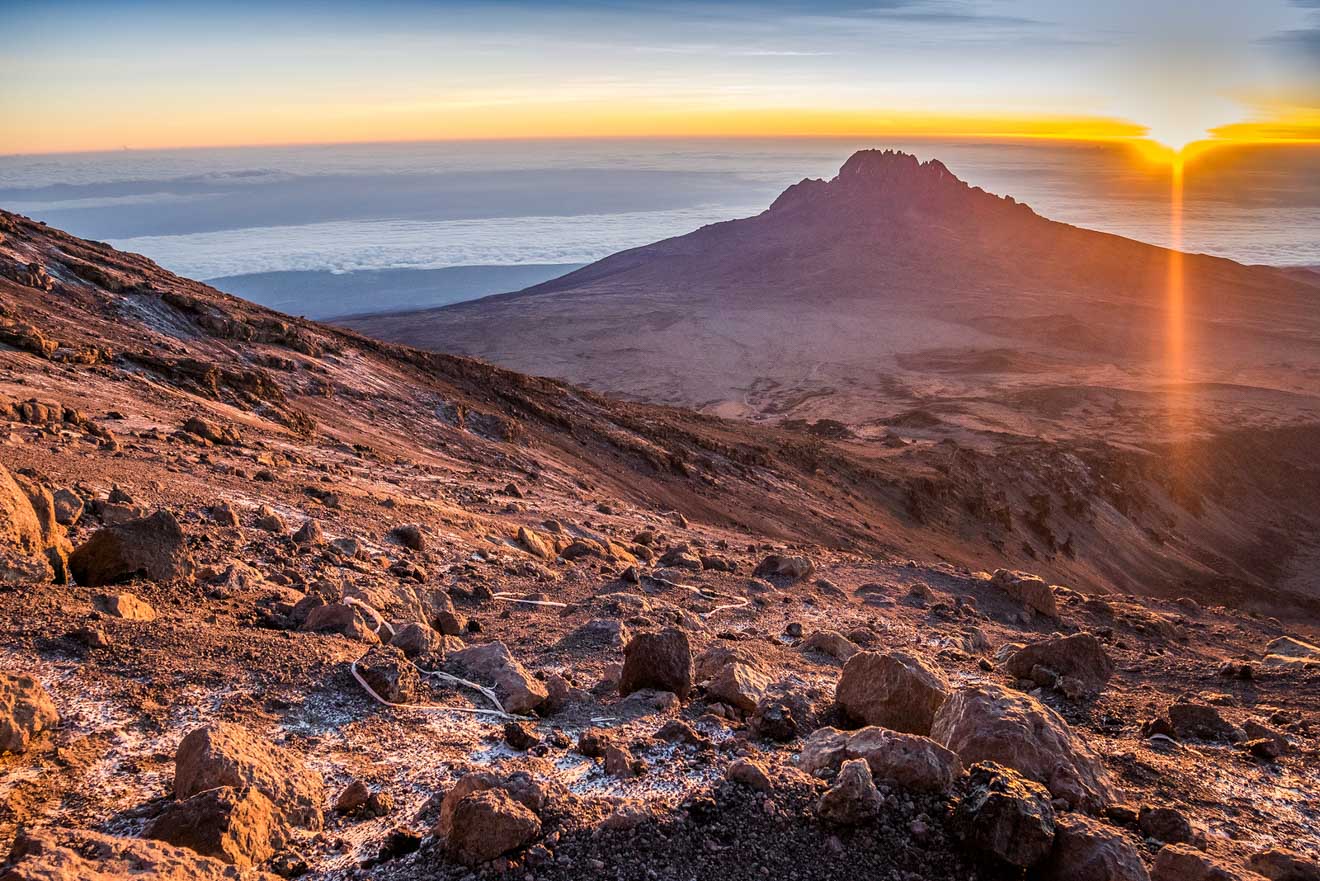
You will be surprised!
There is a 3G connection in some points, but not everywhere. If you really want to check your email and post some pictures on Instagram, just follow the porters, they usually hang out in the spots with good reception, they know places. 🙂
But I, of course, would recommend to completely unplug for these days and enjoy the nature, this is what I did and it was awesome!
Some important Swahili expressions
Swahili is the language spoken in Tanzania (and, in fact, in many other African countries).
The language is quite easy and these are the phrases you might find useful when on the mountain:
- Pole-pole – slowly-slowly (You will be using this A LOT!)
- Asante (sana) – Thank you (very much)
- Karibu (sana) – You are (very) welcome
- Twende – let’s go
- Mambo – how are you (slang-ish, more like “What’s up”)
- Jambo – hello
- Sawa – OK
- Poa – cool (that is your reply to Mambo)
- Hakuna matata – no trouble
- Haraka – fast
- Simba – lion (suddenly it all makes sense, right?)
Kilimanjaro easier alternative
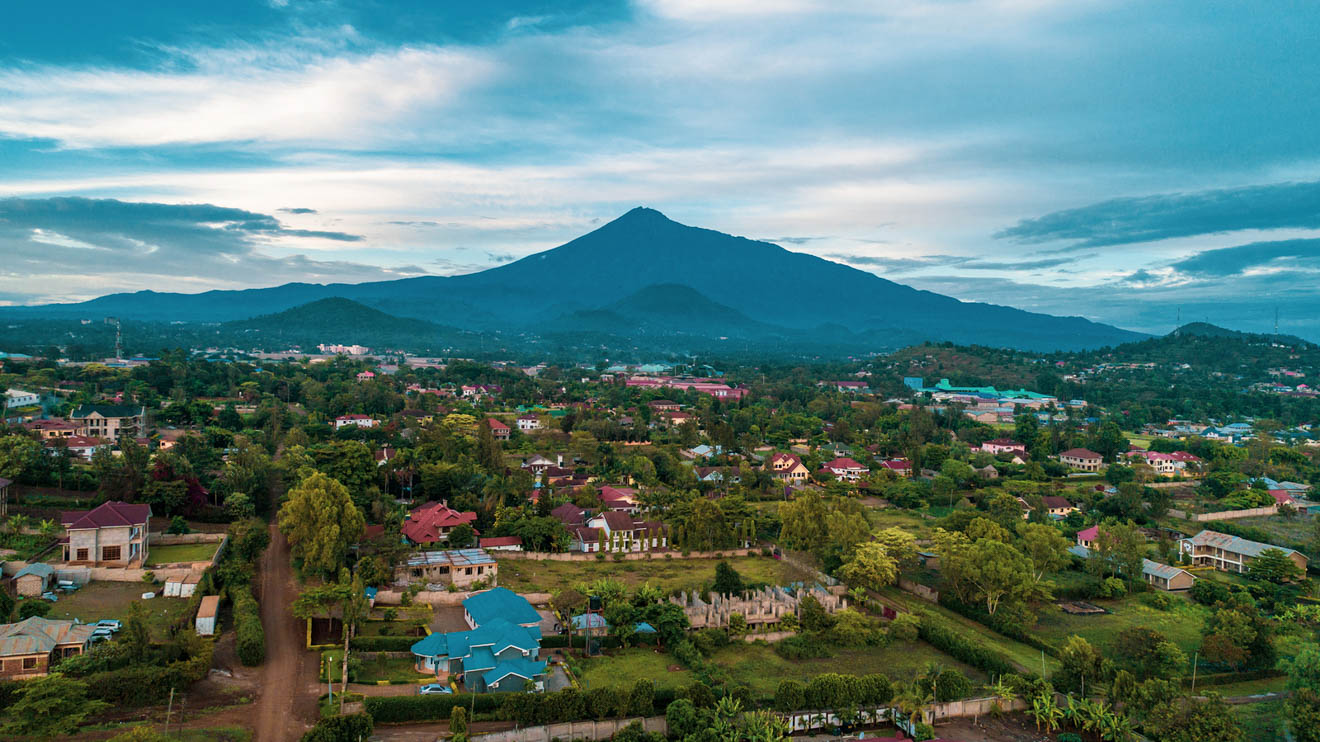
If you are not ready to commit to climbing Kilimanjaro just yet, I can offer you an alternative – Mount Meru!
Of course, it is much easier to climb Mt. Meru and it only takes 4 days. As the elevation is not so high and you will be in a National Park, you might be able to spot many animals such as giraffes, baboons, and buffalos! The price for trekking Mt. Meru is about 1.200 US$ per person (porters, accommodation in huts, guides and 1 night in a hotel before and after the hike are already included).
The coolest things about Meru? You will have a great view of Kilimanjaro from there!
If you have enough time on your hands, this can also be perfect preparation for Kilimanjaro!
What is next? Safari!
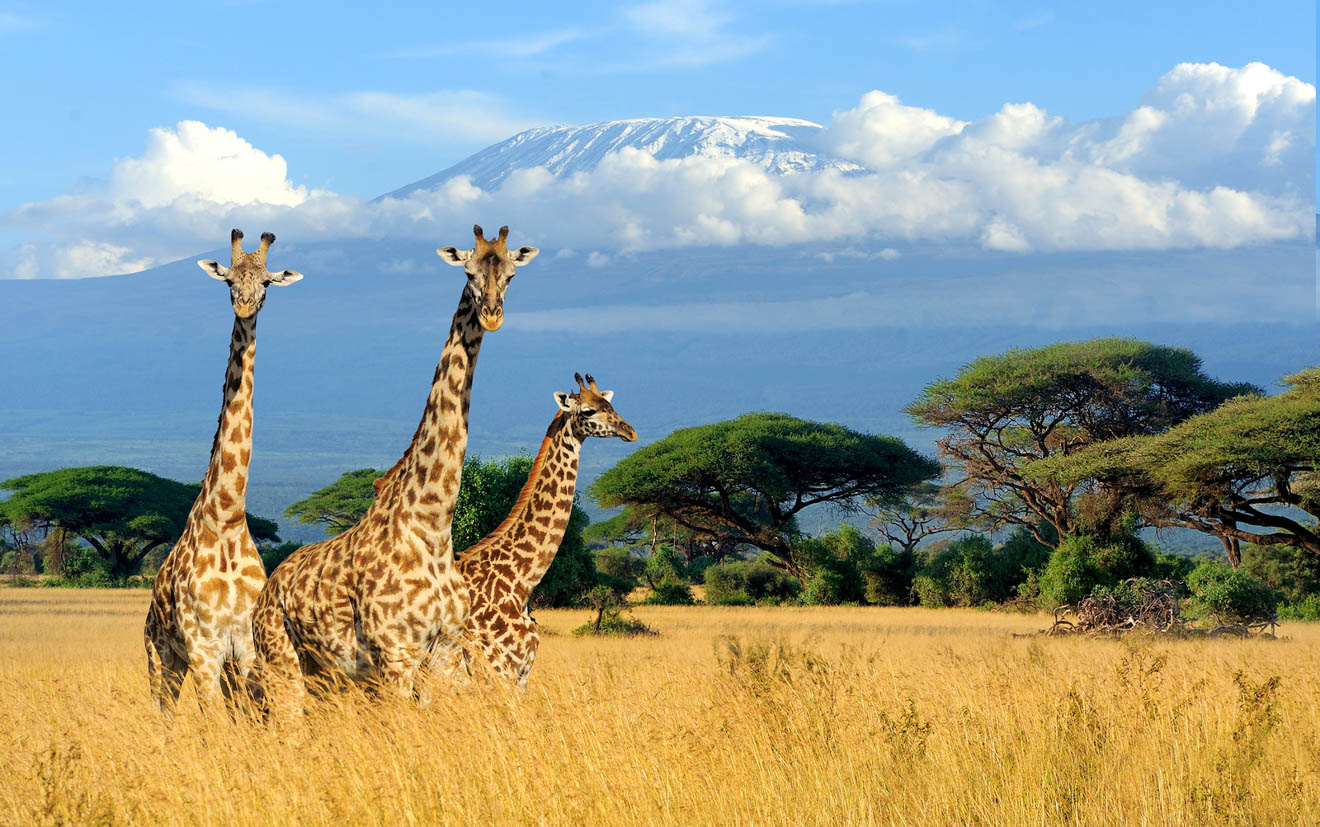
If you have a few extra days for your Tanzania holidays, reward yourself and go on a safari!
Tanzania has excellent wildlife and you will have no regrets for taking part in one of them!
I have continued my Tanzanian journey to safari and I have seen all “Big 5” and so many other animals in only 3 days! It was unforgettable and an amazing reward to myself after conquering the tallest mountain in Africa!
I have described everything about my Tanzanian Safari experience including prices, duration and other tips in this post!
Conclusion
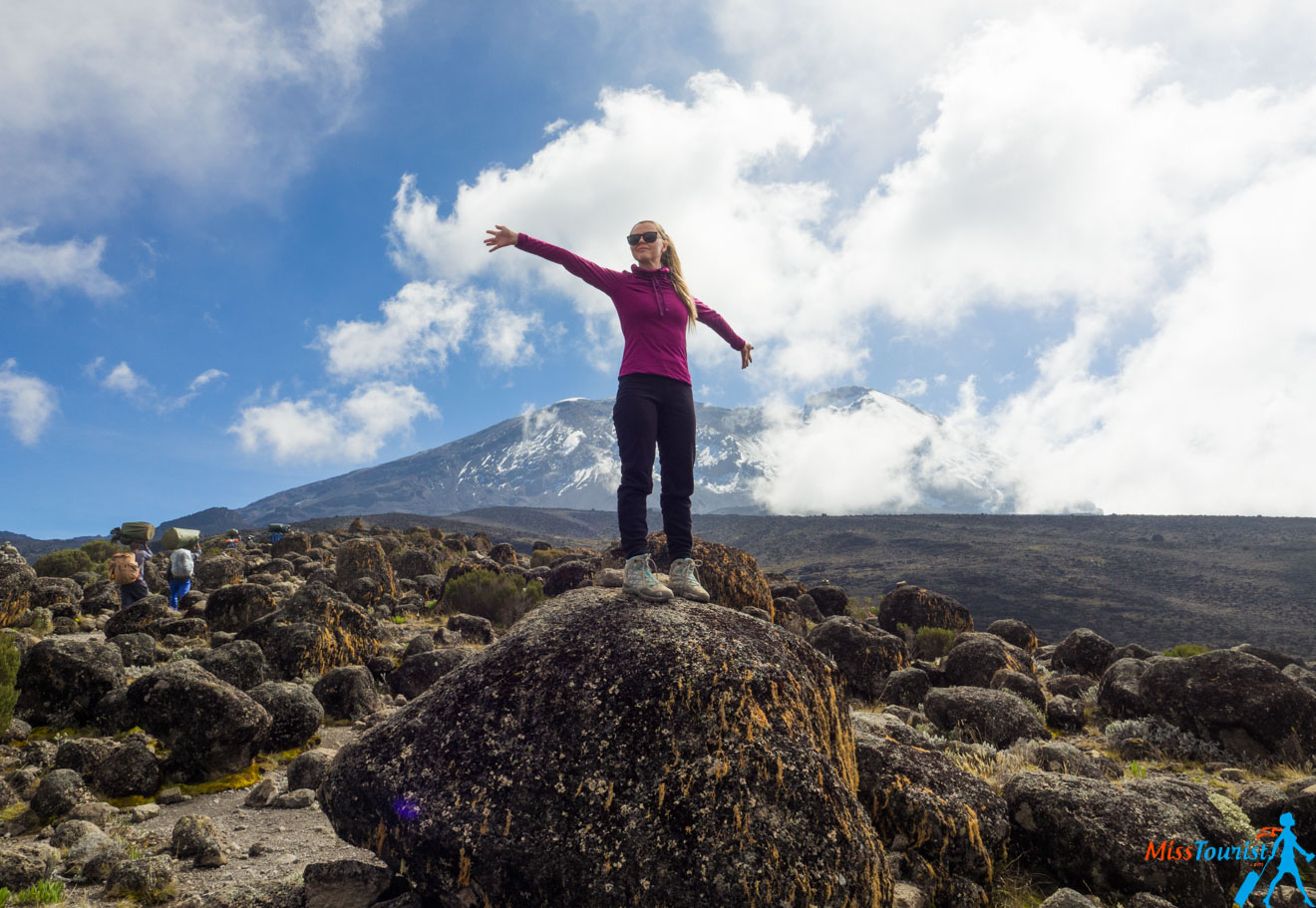
Kilimanjaro is the world’s tallest free-standing mountain and climbing it is a challenge, an adventure that you will never forget!
This post has to be one of my longest ones ever, but I really tried my best to give you enough information about pricing, duration, choosing the trek and the tour company and other practical details to help you prepare in the best way possible!
And I also hope I have motivated you as well – it is a once-in-a-lifetime experience and you will be telling stories to your friends and family about it years and years later! I surely will! 🙂
Let me know what you think about it and don’t hesitate to drop me a line if you have any comments!
Did you climb Kilimanjaro? Tell me about your experience!
Yulia
Pin it for later:
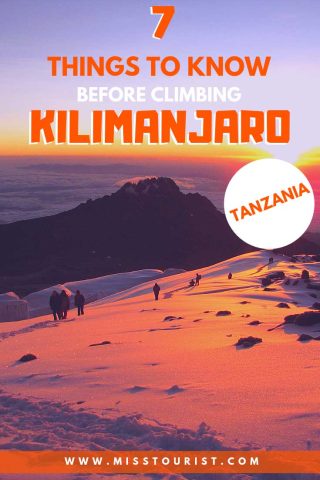
Pint it for later:
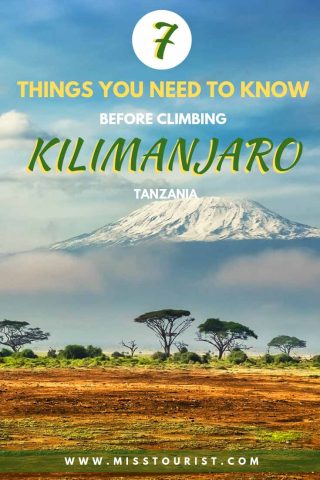

 Yulia Saf
Yulia Saf 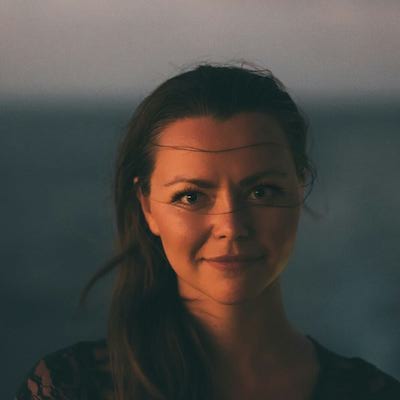






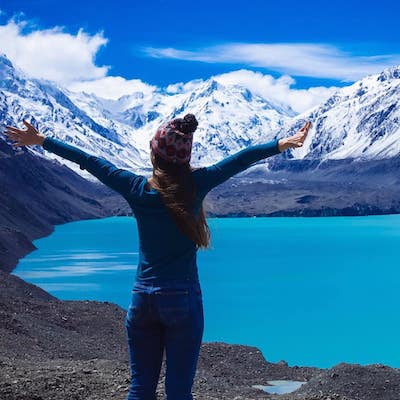
Hi Yulia. Im curious when did you get these prices? I emailed altezza and their rates jumped by almost $400!
Hi Ghassan,
I just reached out to the owner of the company to double check and both the prices on this page and the price they gave you are correct.
The price is about 2500 usd for a Machame 7 day trek (depending on the amount of people) – this is exactly what I wrote. They quoted you 2,497 USD per person for a group tour and calculated the discount (price with discount 2,372 USD per person in your case).
I am not sure what caused the confusion but everything seems correct from my side!
Hope you will have an amazing trip! 🙂
Hi Yulia,
Thanks for your guide it was really helpful! I’m climbing Kilimanjaro in october this year and afterwards we are going to stay in tanzania for a few weeks. I was just wondering if there is anywhere to leave your extra luggage (For after climbing) you don’t want to take up the mountain?
Hi Megan, I am happy my experience can help!
Yes, I think you anyone you ask (either you hotel or the travel agency you go with) would do it with no problems, they are used to these kids of requests!
Hope you will have an easy hike! 🙂
Kilianjaro is not one of the 7 highest peaks in the world, but it is one of the 7 summits of the highest mountains of each of the 7 continents. There is stark difference between the two. The highest peaks in the world are: 1st, Everest, 2nd is K2, 3rd is Kangchenjunga, 4th is Lhotse, 5th is Makalu, 6th is Cho Oyu and the 7th is Dhaulagiri 1. Kilimanjaro does not even rank in the Top 100, but it is the highest free standing mountain in the world.
Hi Alex, thanks for the note!
Yes, I am aware of that, I guess I did not explain myself right, will try to rephrase it now so that it is not confusing, thanks again!
Hello dear Julia!
I read your blog and got a lot of valuable info regarding Kilimanjaro.
However I also plan to go up Mount Meru before.
Do you happen to know which companies offer this trek?
Can you recommend someone?
Thank you!
Andjela
Hello,
For hikes on Mount Meru you can check out bookallsafaris.com, they’re a trustworthy company that offers many treks and safaris!
Just a few that include Mount Meru are this 8 Day Kilimanjaro Elephant Safari, this Hiking and Wildlife Safari, or this shorter Northern Circuit.
Have a great trip!
I want to try this hike, do you know what is the best month to go to Mt Kilimanjaro?
Hello,
I was in January and it was mostly ok, but we did catch a bad rain! I’d say the best period would be from June to October, when it’s not yet that cold!